

Privacy Protection and Copyright: The Legal Side of Writing a Biography
Home » Blog » Privacy Protection and Copyright: The Legal Side of Writing a Biography
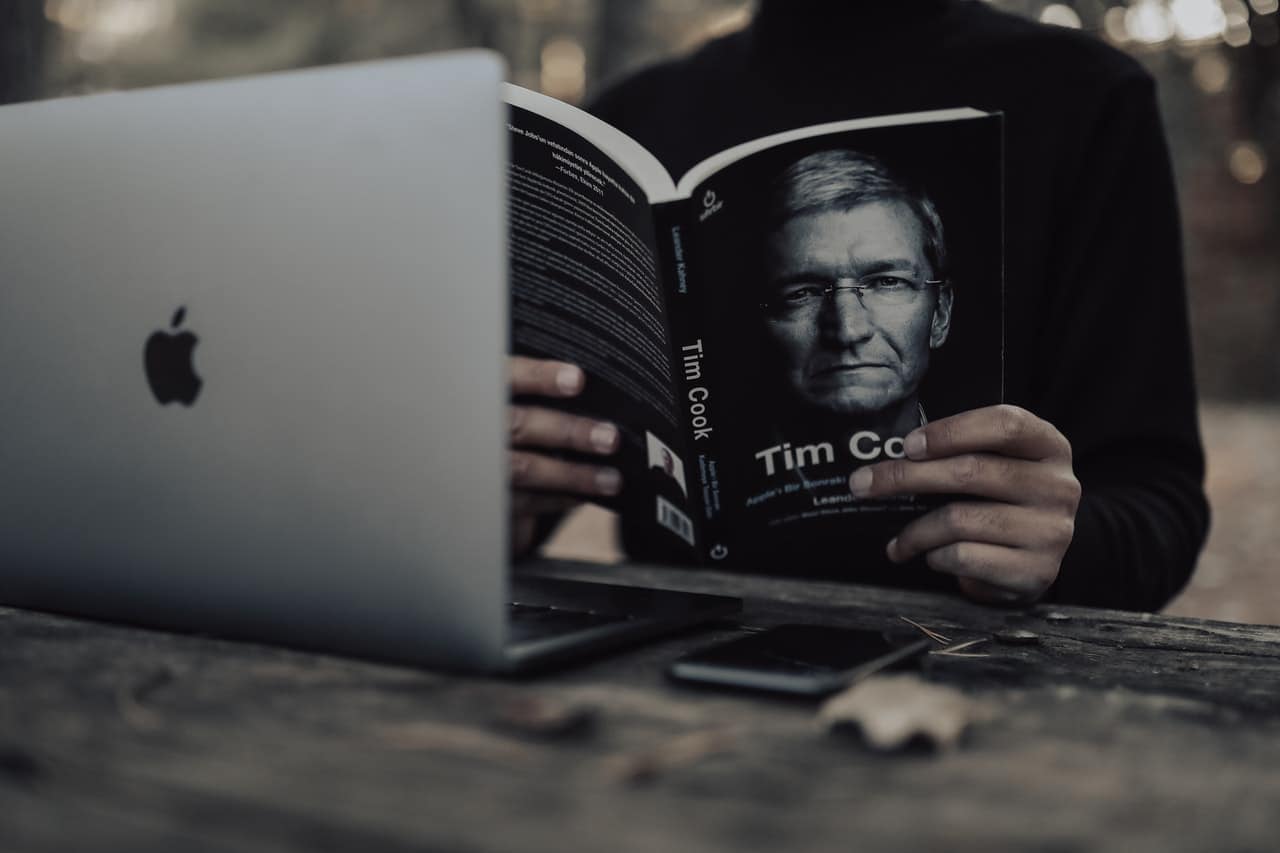
PRIVACY PROTECTION AND COPYRIGHT: THE LEGAL SIDE OF WRITING A BIOGRAPHY
Biographies are perennial bestsellers. Depending on the subject, biographies can turn an author into a household name almost overnight.
However, a biography can also leave an author with serious legal issues if they don’t approach the project in the right way. Authors also need to be objective in separating fact from opinion as they are accountable for the information they share.
Indeed, writing a biography is no easy task and must be done right, to avoid any problems along the way.
In this article, we will focus on the relevant privacy and copyright issues that may arise when writing both authorized and unauthorized biographies.
Biography Basics

According to the Merriam-Webster dictionary, a biography is “a usually written history of a person’s life.” This definition encompasses accounts of a person’s life based on first-hand or second-hand information.
Moreover, biographies belong to the domain of non-fiction unless the events and characters surrounding actual events are fictional.
When it comes to biography sources, second-hand opinions, anecdotes, and experiences must come with documentation. For instance, interviews, videos, or even legal paperwork can substantiate claims.
Additionally, opinions must be carefully marked as such to ensure they do not constitute an attack on an individual’s character or reputation. After all, a biography should aim to tell an unbiased account of a person’s life.
Biographies can depict the lives of both living and deceased individuals.
Biographies of long-deceased historical figures often contain information extracted from previous works or otherwise in the public domain. In these cases, the risk for legal challenges is rather slim.
However, biographies of living or recently deceased figures may represent a legal challenge as there may be privacy protection and copyright issues involved.
Authorized vs. Unauthorized Biographies
There are two main types of biographies: authorized and unauthorized.
Authorized biographies have the consent of the book’s subject or their family or, at the very least, some collaboration from the subject or their representatives.
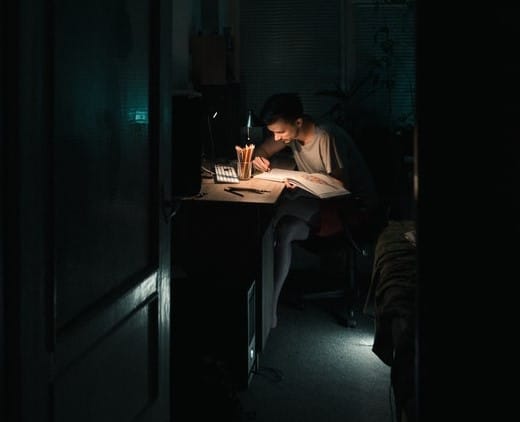
Unauthorized biographies, on the other hand, do not have the consent of the subject in question. These types of works often have salacious leanings, focusing on selling books first and the subject’s reputation second. Depending on the material's information, the author may face legal action by the subject or their representatives.
Legal Authorization for Writing a Biography
Ideally, authors would set about writing a biography with the full consent of the subject or their estate. Doing so provides the author with the confidence of knowing they will not face legal challenges once the work reaches publication.
Obtaining legal authorization generally involves writing material that has the subject’s seal of approval.
It is worth noting that authorized biographies usually require the author to paint the subject in a favorable light. While this isn’t always the case, subjects may require authors to remove certain events or information from the material if it is too salacious.
In the words of New York Times columnist Matt Knight , an authorized biography “suggests a puffy publicity piece.” As such, readers often view authorized biographies as skewed toward favoring the subject.
According to Writer’s Digest , a leading writer resource publication, in an authorized biography, “the author typically holds interviews with the subject of the book, the subject’s family members, and friends, co-workers, etc. The author is privy to information only attainable from the subject of the book.”
Thus, authorized biographies have an added layer of credibility that unauthorized ones do not.
Additionally, authorized biographies may require the author and publisher to share a portion of the revenue with the subject. In the event the subject is deceased, profits would be shared with their heirs or estate. As such, it is often more difficult to get authorization from a living subject than an estate.
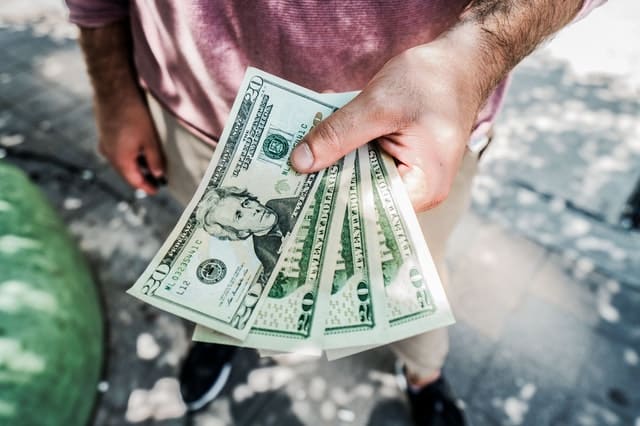
To quote renowned literary critic Leon Edel:
“The secret of a biography resides in finding the link between talent and achievement. A biography seems irrelevant if it doesn’t discover the overlap between what the individual did and the life that made this possible. Without discovering that, you have shapeless happenings and gossip.”
Indeed, an authorized biography has a greater degree of credibility as it allows the author to portray the real person and not a public persona surrounded by gossip and hearsay (as long as the real person doesn’t have too much dirty laundry).
As far as publishing goes, traditional publishing houses generally require consent from the subject before the publication of a biography. Generally speaking, this position is due to credibility issues.
This makes it essential for authors to ensure they are providing accurate information. Otherwise, readers may dismiss the book due to false or inaccurate claims.
Risk is also an important consideration for both publishers and authors. Although the First Amendment covers authors in the United States, inaccurate information or misrepresentation of an individual can lead to serious legal consequences.
Therefore, authorized publications provide the safest means of producing a biography. Overall, this gives the book greater credibility while ensuring legal protection for all parties involved.
Writing an Unauthorized Biography
The heading for this section could easily read: “Proceed at your own risk.”

As its name suggests, an unauthorized biography does not have the official blessing from the subject or their representatives. As such, the author must proceed with caution as they would most likely have no cooperation whatsoever from the person who would otherwise be the primary source for their project.
Consequently, the author may have no way to corroborate the information presented in the book directly, which is the main reason why unauthorized biographies tend to contain information based on unreliable second-hand sources such as “insiders” or “people with knowledge.”
Critics point out that unauthorized biographies tend to have a sensationalist tone meant to generate buzz surrounding the topic at the expense of the subject’s reputation. To quote renowned biographer Kitty Kelley :
“Whether authorized or unauthorized, a good biography is nuanced and complex, because that is the way most people are. Being imperfect, most of us are messy and mixed-up in our private lives, inconsistent in our intentions, misled in our motives, and contradictory in our actions. Powerful public figures seem to have even more exaggerated faults and frailties, probably because their legions of publicists have spent years bleaching out the stains. The most authentic parts of a life are often quirky and filled with secrets that might startle the admissions committees of colleges and country clubs.”
Indeed, an unauthorized biography frequently paints the subject in an unfavorable light. While this assault may not have explicitly malicious intent, the point is to sell books, even if it is at the subject’s expense.
There are three main concerns when it comes to writing an unauthorized biography.
First, there is the question of libel. Libel is the use of information, usually hearsay or gossip, that damages an individual’s reputation.
Generally speaking, this information emanates from undisclosed sources or unsubstantiated information. Therefore, the publication of such information is defamatory and can lead to a lawsuit.
Authors may argue that personal opinions are factual. However, this defense is vague, especially if the overall statements are false or unsubstantiated.
While libel cases do not generally go far in court, such cases may damage the author’s reputation and hurt sales as a result.
Next, unauthorized biographies may constitute an invasion of privacy. If the author obtains information for the book using duplicitous or illegal means, the subject may have a legitimate court claim.
For example, if the information obtained emanated from hacked email accounts or bribed staff, such information would constitute an invasion of privacy. However, if the author obtained the same information lawfully via public record, an invasion of privacy claim would not be valid.
Lastly, the subject of an unauthorized biography may claim misappropriation of their likeness and any of their trademarks and copyrights. This claim occurs when authors and publishers use the subject’s name and likeness directly to promote the work, including trademarks and copyrights.
For instance, unauthorized biographies cannot use pictures of the subject on the cover unless the photographs are in the public domain. Moreover, authors and publishers need to include a disclaimer indicating the subject did not cooperate to create the content.
Biographies and PrivacyProtection
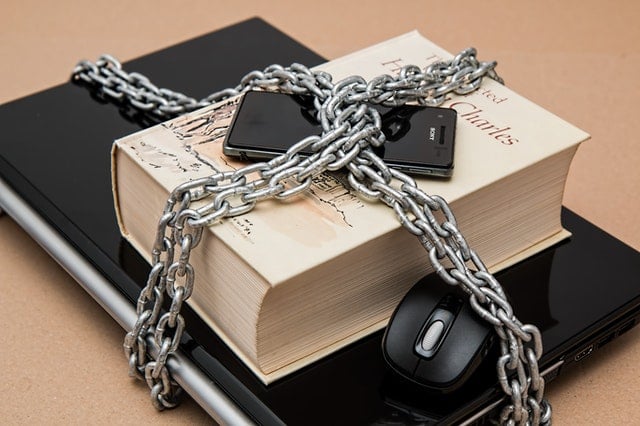
Privacy protection is a significant issue for public figures. After all, it is hard to define the extent to which a public figure’s life is public and what should remain private.
In general, intrusion on a person’s privacy is the result of obtaining information through unlawful means. While intrusion itself is not a crime, any false or fraudulent activity used to gain access to private information could be prosecuted as a felony.
Mark Zuckerberg, the founder of Facebook, once said, “ The question isn’t ‘What do we want to know about people?’ it is ‘What do people want to tell about themselves?’ ”
Indeed, privacy is about what individuals want to tell others about themselves instead of what other people wish to know.
This implied breach of privacy is the reason why public opinion considers unauthorized biographies unethical as they profit from commercializing unflattering personal details.
Even if you can lawfully obtain this type of information, popular opinion considers it inappropriate to benefit from the more personal struggles a public figure might go through, including divorces, addictions, and other similar scandals.
Furthermore, copyright infringement is a serious matter. For example, the use of content extracted from quotes, letters, writings, emails, books, interviews, and so on, without the copyright owner’s consent, can lead to serious legal consequences.
Copyright holders almost always contest the use of images, brands, names, and likenesses without permission. As such, authors and publishers face the risk of being sued if they are not extremely careful with their content.
It is worth stating that the fair use principle does not apply if the author and publisher use personal information or copyrighted materials for commercial purposes.
And even First Amendment rights are moot if the intent to profit from a publication is apparent.
In these instances, the subject of the unauthorized work may seek fair compensation, particularly if their reputation suffered as a result of its publication.
One key consideration in this discussion is breach of confidence. This phenomenon occurs when an individual is privy to information on a public figure and then discloses it without consent.
Disclosure of confidential information is illegal in cases where doctors, lawyers, or employers reveal personal information about an individual. In professional circles, these types of actions generally result in a revocation of a professional license.
Is It Worth the Trouble?
At this point, it’s fair to ask, “Is it worth the trouble writing an unauthorized biography?”
The answer depends on the intent of the author and the publisher.
Unauthorized biographies for strictly commercial purposes are generally not worth the risk of legal action. On the other hand, an unauthorized work for entertainment or informational purposes may not trigger a lawsuit but may damage the reputations of the author and the publisher.
It is best to take into account potential privacy and copyright matters before publishing such a work.
Whenever possible, content with the subject’s consent is the best option. However, if an author or publisher feels compelled to publish an unauthorized account, they should proceed at their own peril lest they risk facing severe legal challenges.
Related Content

Leave a Reply Cancel reply
Your email address will not be published. Required fields are marked *
Subscribe to Newsletter
- How Can SharePoint Be Used To Organize and Disseminate SOPs?
- Planning the Perfect Genealogy Research Trip: A Step-by-Step Guide
- From Silly to Awesome: How Words Change Meaning Over Time
- The Psychology of Font Choice: How Typography Impacts Content Engagement
- How to Distribute SOPs for Maximum Usability
- Copywriting & PR
- Editing & Proofreading
- Writer's Resources
- Training & HR Material
- Ghostwriting & Books
- Social Content
- Web Content
- Corporate & Stakeholder Communications
- Technical Writing
- Medical Copy
- O&G Copy
- Thought Leadership Content
- RFPs & Proposals
- Speeches & Presentations
- Watercooler
- About WordPress
- Get Involved
- WordPress.org
- Documentation
- Learn WordPress

- Auto[BLOG]raphy
- ClassWrap 1: January 15
- ClassWrap 2: January 22
- ClassWrap 3: January 29
- ClassWrap 4: February 5
- ClassWrap 5: February 12
- ClassWrap 6: February 19
- ClassWrap 7: March 12
- ClassWrap 8: March 19
- ClassWrap 9: March 26
- ClassWrap 10: April 2
- ClassWrap 11: April 9
- ClassWrap 12: April 16
- 20% Project Grading Rubric and Presentation
- Special Collections
- Avery Center
- Final Projects
- Student Writing
- Study Guide
The “You” of Sherman Alexie’s “The Unauthorized Autobiography of Me”
Sherman Alexie’s “ The Unauthorized Autobiography of Me ” is indeed the perfect essay for this point in the semester. We could take any of the terminology from the Tool Kit in Smith and Watson’s Reading Autobiography and apply it to Alexie’s essay.
As the essay moves on Alexie addresses other Native Americans stating, “We are Indians… It belongs to us. We own it and we’re not going to give it back” (Alexie 4). This statement is in quotes as Alexie writes it; this is his response to a questioning woman. The next paragraph down, Alexie does not use quotes and addresses a different audience writing, “So much has been taken from us that we hold on to the smallest things with all the strength we have left” (Alexie 4).
Alexie is consistently giving his audience something and then taking it away. Later in his essay, Alexie describes his mother singing as she sews a quilt and addresses a non-Native American audience with “You might assume she is singing a highly traditional Spokane Indian song. She is singing Donna Fargo’s…” (Alexie 5).
As he moves through different vignettes, it seems that Alexie is always addressing a different audience. The tool kit in “Reading Autobiography” explains that autobiography may address multiple audiences and this can be seen throughout Alexie’s “The Unauthorized Autobiography of Me”.
One Response to The “You” of Sherman Alexie’s “The Unauthorized Autobiography of Me”
I think I read the two sections in quotes and out of quotes differently. You note that Alexie is addressing other native americans–but he is explicitly addressing the woman in the audience. I think he switches to a more private address outside of quotes to address the “we” of his own cohort of “indians.”
Also, I hope you don’t mind, but I added a colon right in the sentence under that handsome picture (you needed something heftier than a comma) and linked “Defending Walt Whitman.” Might as well connect the dots–this is, after all, the magnificent inter-web!
I’ve said this in another comment, but I’d love to hear Smith and Watson here as well. What is it specifically that they say about audience that spurred this response?
Comments are closed.
SIGN IN BELOW
- Entries RSS
- Comments RSS
- College of Charleston Blogs
Group Blogs
- Uncategorized
- Search for:
- "Tool Kit"
- 20% project
- Alison Bechdel
- Anne Bradstreet
- authenticity
- Autobiographical Truth
- Autobiography
- Benjamin Franklin
- Cabeza de Vaca
- character sketch
- Claudia Rankine
- Don't Let Me Be Lonely
- Giralamo Cardano
- Ideological I
- parental influences
- Reading Autobiography
- relationality
- Religious Ideologies & Disasters
- Sherman Alexie
- Smith and Watson
- Spiritual Autobiography
- storytelling
- The Unauthorized Autobiography of Me
Recent Posts
- Writing the Sikh Self: From Founder to Fateh
- The Self Simplified- A Student’s Tool Kit
- Hello World, Rankine Speaking…
- A Quest for Agency: Don’t Let Me Be Lonely
- I was told “You will never forget this moment”.
- Real world books
- Snicket family
- Lemony Snicket
- Works by Lemony Snicket
- The Unbearable Universe
Lemony Snicket: The Unauthorized Autobiography
- 2 The Pony Party!
- 3 Legal text
- 4 Table of Contents
- 5.1 Introduction
- 5.2 Why was Mr. Snicket's death published in the newspaper? / Who Took This?
- 5.3 Why has Mr. Snicket dedicated his life to the Baudelaire case / Is this letter authentic?
- 5.4 Why does Count Olaf have a tattoo of an eye on his ankle? / Why has this building been abandoned?
- 5.5 Where are the Quagmire Triplets now? / Who is the tallest person in this photograph?
- 5.6 Who is Beatrice? / Why was this actress replaced after only three performances?
- 5.7 What is V.F.D.? / Why did this ship leave three hours ahead of schedule?
- 5.8 Why is there a secret passageway between the Baudelaire mansion and 667 Dark Avenue? / What has stained this man's jacket?
- 5.9 Why isn't Mr. Poe as helpful as he ought to be? / Why do these children have nothing better to do than sit outside and stare glumly at the camera?
- 5.10 Why is Lemony Snicket on the run? / What has happened to the reptiles in Dr. Montgomery's collection?
- 5.11 How many associates does Count Olaf have? / What can be hidden in a book?
- 5.12 Are the Baudelaire parents really dead? / Why do so many things end in fire?
- 5.13 Is there anything a concerned citizen can do if he or she wants to help the Baudelaires? / If there's nothing out there, what was that noise?
- 5.14 Who is Lemony Snicket? / ???
- 6.2 Introduction
- 6.3 Section One
- 6.4 Section Two
- 6.5 Section Three
- 6.6 Section Four
- 6.7 Section Five
- 6.8 Section Six
- 6.9 Section Seven
- 6.10 Section Eight
- 6.11 Section Nine
- 6.12 Section Ten
- 6.13 Section Eleven
- 6.14 Section Thirteen
All of the pictures within the book are in black and white, which may suggest the events in the series took place in the past. It contains extra information on V.F.D. , including the Snicket siblings and many other characters, that were not covered in the main series. It also contains crucial information on earlier books, such as the backstory behind Uncle Monty and his assistant Gustav Sebald and a secret concerning the stacks of paper in Paltryville that were destroyed soon after the Baudelaires departed. It explains the story behind the V.F.D. insignia and all the hidden messages inside the books. It also contains information about animals used by the V.F.D, particularly the Incredibly Deadly Viper and Mamba du Mal , from Uncle Monty's reptile room. It explains how the Mamba du Mal can send warnings to its master, such as, "summer is", meaning "enemies are nearby", "over and gone, over and gone", meaning "probably in disguise", and "dying", meaning, "beware of arson".
Many of the illustrations are ambiguous, but could be used to portray V.F.D characters and headquarters. The book contains the letters written by Lemony Snicket to his siblings Kit Snicket and Jaques Snicket and many of his associates, including the Duchess of Winnipeg .
The Unauthorized Autobiography confirms the V.F.D membership of many characters, such as the Duchess of Winnipeg , Count Olaf , Esmé Squalor and Larry the Waiter .
Throughout the book, many V.F.D. codes are explained, such as:
- "I didn't realize this was a sad occasion", used by a particular waiter at The Anxious Clown and also by Quigley Quagmire in the Slippery Slope , the correct response is "The world is quiet here".
- "Are you who I think you are?", used by Hotel Denouement managers Frank and Ernest in The Penultimate Peril .
- "Well young lady, have you been good to your mother?", used by an elderly man in a flowery shirt, striped tie, tweed coat, and plaid slacks with sharp creases and shined shoes. The correct response to the question would be "The question is, has she been good to me?"
- Mozart's 14th symphony, when whistled, is said to be a code.
The Pony Party! [ ]

The Pony Party! reversible cover
Exclusive to the hard back version is a reversible book jacket to disguise the autobiography as a cheerful story called The Pony Party! which is book #1 of the fictional series The Luckiest Kids in the World! written by a woman named Loney M. Setnick and illustrated by Beth Quiltrest. The story is obviously a spoof intended to create a sharp contrast to the dismal events in A Series of Unfortunate Events . The name Loney M. Setnick is an anagram of Lemony Snicket and the name Beth Quiltrest is an anagram of Brett Helquist .
Legal text [ ]
Table of contents [ ].
Each chapter in the book included a question. In the book however, Lemony Snicket changed the chapter's titles, saying they were not the "proper questions" for the Baudelaires' case, and wrote in new titles after crossing out the previous names. Regardless, some of the former questions are answered within the chapter itself (such as Chapter 10) or other chapters.
| Chapters | Former Title | New Title |
|---|---|---|
| 1 | Why was Mr.Snicket's death published in the newspaper? | Who took this? [picture of infant child] |
| 2 | Why has Mr. Snicket dedicated his life to the Baudelaire case? | Is this letter authentic? ["R"] |
| 3 | Why does Count Olaf have a tattoo of an eye on his ankle? | Why has this building been abandoned? |
| 4 | Where are the Quagmire Triplets now? | Who is the tallest person in this photograph? |
| 5 | Who is Beatrice? | Why was this actress replaced after only three performances? |
| 6 | What is V.F.D.? | Why did this ship leave three hours ahead of schedule? |
| 7 | Why is there a secret passageway between the Baudelaire mansion and 667 Dark Avenue? | What has stained this man's jacket? |
| 8 | Why isn't Mr. Poe as helpful as he ought to be? | Why do these children have nothing better to do than sit outside and stare glumly at the camera? |
| 9 | Why is Lemony Snicket on the run? | What has happened to the reptiles in Dr. Montgomery's collection? |
| 10 | How many associates does Count Olaf have? | What can be hidden in a book? |
| 11 | Are the Baudelaire parents really dead? | Why do so many things end in fire? |
| 12 | Is there anything a concerned citizen can do if he or she wants to help the Baudelaires? | If there's nothing's out there, what was that noise? |
| 13 | Who is Lemony Snicket? | Chapter one . . . (Lemony Snicket apparently scratched out the second title, and the rest of the writing is illegible) |
Summary [ ]
Introduction [ ].
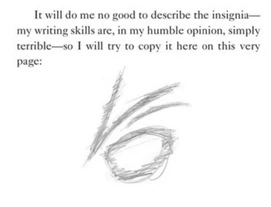
An introduction is provided by Lemony Snicket's official representative , who explains the cryptic way he received the biography. He assures the audience that the book does not appear to be a forgery, appears to come from Lemony Snicket, and was divided into thirteen sections. The representative is confirmed to be Daniel Handler by the index under "H": "Handler, Daniel, vii-xix,".
Why was Mr. Snicket's death published in the newspaper? / Who Took This? [ ]
An obituary of Lemony Snicket , published after he began writing A Series of Unfortunate Events, is published in The Daily Punctilio . He was reported dead by anonymous and possibly unreliable sources; some doubtful facts of his life are described, and it is also mentioned that Snicket had to go on the run following the release of information involving his involvement in V.F.D.
Snicket himself writes a NOTE TO FILE, while waiting for the Prospero to appear. He rants about the unreliability of The Daily Punctilio , as it gets its information only from people who call them, and then describes how odd it was to attend his own burial. He also reiterates his mission to make sure that the Baudelaires' story is truthfully told.
Included next is a letter from Lemony Snicket to Charley Patton from several years before, during his engagement to Beatrice , complaining about the inaccuracies in The Little Snicket Lad , a popular folk ballad. He mentions his family's friendship with the cheesemakers at Valorous Farms Dairy , and claims that the song is wrong about him being kidnapped in diapers, though he doesn't seem to have any evidence of this claim.
Why has Mr. Snicket dedicated his life to the Baudelaire case / Is this letter authentic? [ ]
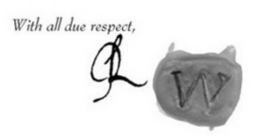
R's signiature.
R, the Duchess of Winnipeg, sends Snicket a letter, relieved to find he is alive, after he had been captured at her masked ball several years before. However, her letter is very scattered and full of errors.
Snicket's NOTE TO FILE concerning the letter, which reached him at Veblen Hall, concerned him, and he believes it may be a forgery, or that R. was trying to send a message. He fears the worst.
Why does Count Olaf have a tattoo of an eye on his ankle? / Why has this building been abandoned? [ ]
Included is part one of a transcript of the meeting of V.F.D members: J , L , M, R , R, M, L, K , D , S , and I. (I being a pronoun instead of an initial). J is the secretary who transcribed the minutes. One of the Rs is a Vice Chancellor.
M announces firstly that they will meet for a 7:30 p.m showing of Werewolves in the Rain by Dr. Sebald , in order to receive a secret message, and the next morning at 9:00 a.m will be monthly examination for neophytes R, L, K, B, J, E and G, which will move their mapmaking session.
M then announces that they will have to again move headquarters, as Geraldine Julienne is publishing their address in her "Secret Organizations You Should Know About" column. R is concerned that this disruption will affect their younger members, and proceeds to explain their recruitment process:
| “ | ” |
She adds that disrupting the training process will confuse the neophytes even more, as they will lose sleep moving headquarters, which(as they know from S's report on Prufrock Preparatory School)will make their work suffer, and they could forget important information. M argues that the risk of them being discovered is too great.
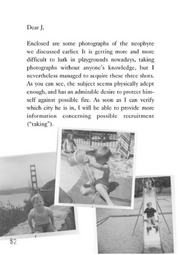
Letter to J.
J suspects that an enemy has infiltrated their ranks and is leaking information to The Daily Punctilio , to which K disagrees. J describes that he has been to seven headquarters already, and they may have lost information inbetween transfers. He believes someone has betrayed them.
At that moment, E and O enter from behind the puppet theater, threatening them with something from a box (presumably a match). O begins to issue a list of demands.
The transcript ends, and the second half is to be hidden in between pages 302 and 303 of Ivan Lachrymose: Lake Explorer , which is hidden under someone's bed, presumably Josephine Anwhistle's .
Several photographs follow, and then a letter addressed to J, enclosing photos secretly taken of a potential neophyte at the playground. The "subject" is described as physically adept and showing a desire to protect himself against fire. The sender promises to soon provide more information concerning possible recruitment ("taking").
Where are the Quagmire Triplets now? / Who is the tallest person in this photograph? [ ]
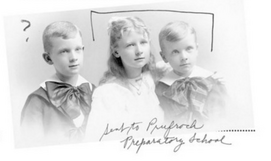
Sent to Prufrock Preparatory School
In a letter to be delivered to the cheesemakers, Snicket explains that he is waiting to meet Dr. Sebald, and he is worryingly late- nineteen hours late, to be exact. He includes a sample of one of Sebald's scripts, including the Sebald code, and as he believes Sebald will not arrive, he sends the pages instead to the cheesemakers. He also mentions his conviction that Dr. Montgomery never learned the Sebald Code . He also includes several possible titles for a book about his own life.
Pages 98-102 of Zombies in the Snow are included, which contain a hidden sebald code that reads:
The survivor is probably Quigley Quagmire. Next is a letter from Sally Sebald to Snicket, relieved that Snicket is alive and Dr. Orwell is dead. She is handling Gustav's affairs for him following his death. At Snicket's request, she sends him all the photographs from Zombies in the Snow , and she confirms that Gustav was trying to send a message concerning a survivor, though she knew no more about it.
The photos included are:
- Three actors from Zombies in the Snow posing in front of the snowman built specifically for the scene. Sally says that the actor in the center played Young Rölf, whose name might be Omar.
- A photograph from the forest scene. Ceramic deer had to be used instead of real ones, due to budget.
- The sled chase scene.
- The scene where the townspeople "try to stab the zombies with icicles growing on the fishing cannery."
- Another photograph of the snowman, which stood for several days until Gustav realized his message had not been received.
- Three children- Sally is confused as to the photo's inclusion, as the kids were not in the film. This photo is heavily implied to be of Quigley , Isadora and Duncan Quagmire .
- Gustav beginning work on the snowman.
Who is Beatrice? / Why was this actress replaced after only three performances? [ ]
NOTE TO FILE: The following papers were found blowing together in the Financial District of the city.
A letter, addressed to the cheesemakers, and written by Kit Snicket , tells them that the archives of The Daily Punctilio were destroyed, and she is wandering around the city to see if she can find any surviving papers. She sends them several newspapers from "that long and terrible week."
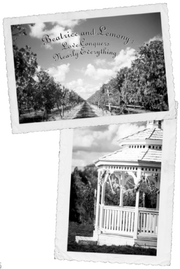
Beatrice and Lemony: Love Conquers Nearly Everything
First is an article by Lemony Snicket himself, as a dramatic critic. He explains that while last week he gave a good review of The World is Quiet Here , it has been replaced by Al Funcoot's play One Last Warning to Those Who Try to Stand in My Way. He gives a scathing review to the new musical, which made several changes, including replacing his fiance, the lead actress, with Esmé and ending the play with the number "Place All Your Valuables on the stage or Something Dreadful Might Happen to You." He describes the play as a dastardly plot, and tells the general public to escape. Included is an advertisement for the Veritable French Diner at 141 Dark Avenue.
Next is an announcement from Eleanora Poe . She explains that Snicket has been fired for his criticism of the play, and that she herself loved the performance. In order to apologize to Esmé, they will write nothing but nice things about her from now on, and Snicket's column will be replaced with "Secret Organizations You Should Know About."
Snicket tries to send one more message in his column. He claims he was dismissed for another reason, and begins to say something about Eleanora Poe, but the rest of the article is smudged.
Eleanora apologizes for Snicket trying to place one more column in the paper, and announces that they will now be keeping the doors to the printing press locked tight when they are not in use.
A letter is sent to K from R, saying that she cannot keep the following two letters any longer, and she cannot continue to write to Snicket. She suggests she send the letters to Ike or the cheesemakers.
A letter is addressed to Snicket from the Vineyard of Fragrant Drapes . The letter is just describing the decorations for his wedding to Beatrice, but a Sebald Code message is hidden inside:
Next is a letter from the Vineyard of Fragrant Grapes, describing the wedding venue to Jerome Squalor , for his wedding to Esmé, who requested that there be no sugar bowls. They mention he had recently purchased a penthouse, and gift him a photograph of the grounds, inscribed "Jerome and Esmé: Married After Only One Evening Together."
What is V.F.D.? / Why did this ship leave three hours ahead of schedule? [ ]
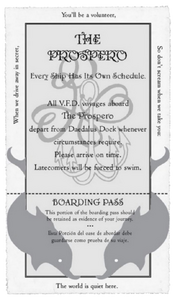
The Prospero ticket.
A newspaper headline from The Daily Punctilio shows that the Prospero left three hours early. Several photos are included, with scarce information: a man on the deck tried to explain the early departure, with only "Phase Two" and "Drat!" being heard, and several passengers were stranded. A photo of the sailors aboard the ship is also included, with a caption listing all of the sailor's names, which are all last names of authors.
A letter from Jacques to Snicket is next: he tells his brother that his review of Funcoot's play "changed everything", and they will arrange for him to be fired; O is more dastardly than they thought. He encloses several documents on the required materials for Disguise Training, and tells Snicket that he has to run away. He explains how to get to the Anxious Clown in order to get a letter containing instructions for leaving the country, before warning him not to write to D, telephone K, or communicate with B at all, though Jacques will try to warn B that The Daily Punctilio is publishing lies about him. He hopes they will be able to reunite someday. In a postscript, he includes a combination to a safe, which is the number identical to their address in Dark Avenue.
Phase One of disguise training is Veiled Facial Disguises, and Phase Two is Various Finery Disguises. Several photos of disguises are also included.
The disguise kit is supposed to contain an Admiral Disguise, a Barbequer Disguise, a Boat Captain Disguise , a Bride Disguise, a Bullfighter Disguise, a Chief of Police Disguise , a Detective Disguise , a Doorman Disguise, a Foreman Disguise , a Gym Teacher Disguise , a Judge Disguise, a Lab Assistant Disguise , a Nudist Disguise, an Operagoer Disguise, an Optometrist Disguise , a Receptionist Disguise , a Taxi Driver Disguise and a Waiter Disguise .
The letter delivered to Snicket at the Anxious Clown is included; enclosed is a blueprint of the Prospero , with two tickets- one ordinary, and done to show to the Captain, which will be the signal to leave early. The Captain also says that he enjoyed Snicket's theatrical reviews. The blueprints are also in the book, as well as the two tickets; the second one contains the last verse of The Little Snicket Lad around the rim.
Why is there a secret passageway between the Baudelaire mansion and 667 Dark Avenue? / What has stained this man's jacket? [ ]
The Daily Punctilio reports on a murder at Lucky Smells Lumbermill; Jacques, investigating, reaches the conclusion that Olaf and The Bald Man with the Long Nose were responsible. The rest of the article is blacked out. Next is another article of The Daily Punctilio , claiming the death an accident. The "Detective" - Smith or Jones- claims that the only bad thing about the case was that he spilled coffee on his jacket.
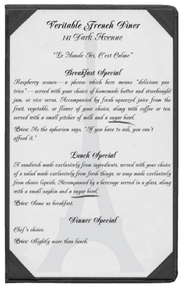
Veriable French Diner menu.
Geraldine Julienne writes a letter to Esmé Squalor, thrilled to have received one from her previously. She informs Esme that she will not be criticized again, and confesses to sometimes making things up for her column. She also answers some questions Esmé had posed to her: the penthouse of 667 Dark Avenue was sold to Jerome Squalor, he is not married, and, per Esmé's request, Geraldine researched where she could find him. Every morning, he had breakfast at the Veritable French Diner between 7:30-8:30 AM, if she wanted to "accidentally" bump into him.
A menu for the Veritable French Diner includes two mentions of a sugar bowl .
Jacques sends a letter to Jerome begging him not to marry Esmé. While he cannot explain many of his reasons, including the reason he begged Jerome to buy the penthouse, he explains that he is a member of an organization and that a villain, O , has infiltrated The Daily Punctilio . He explains that a recent death in Paltryville was no accident, and in a village he is currently hiding, he found a couplet:
Jerome next sends a letter to Jacques, and it is revealed that he never received the previous note, presumably due to it being intercepted by the doorman. He says that Esmé can't wait for Jacques to come visit and "get what he deserves." He asks if Jacques thinks it's a good idea to adopt children.
Why isn't Mr. Poe as helpful as he ought to be? / Why do these children have nothing better to do than sit outside and stare glumly at the camera? [ ]
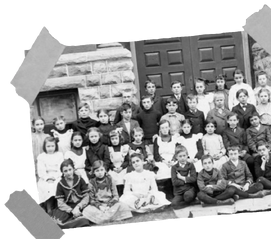
Prufrock students staring glumly at the camera.
Vice Principal Nero sends a letter to Mr. and Mrs. Spats , thanking them for sending him an article from The Daily Punctilio about books that are dangerous for children to read. All of those books were on the reading list of their new English teacher, Ms. K . When she was informed that she was to be fired, Ms. K immediately kidnapped two orphans, holding them by their ankles as she ran across the front lawn.
Nero notes that the children's faces were very serious, "as if they were embarking on an important mission of some kind." He adds that since Mr. Remora retired from choking on a banana, Coach Genghis left and Mrs. Bass is always taking a day off to visit the bank, the children have nothing better to do than sit outside and stare glumly at a camera, though it leaves Nero plenty of time to practice the violin. One of the children on the photograph might be Carmelita Spats .
He includes a list of the books Ms. K was having her children read:
- Cleary, Beverly , Ramona Quimby, Age 8
- Dahl, Roald , Matilda
- Doyle, Vincent Francis , Ivan Lachrymose: Lake Explorer
- Grimm, the Brothers , Grimm's Fairy Tales
- Hudson, W.H. , Green Mansions
- Poe, Edgar Allan , The Coded Poetry of Edgar Allan Poe
- Pukalie, Lena , I Lost Something at the Movies
- Salinger, J.D. , Nine Stories
- Sir (?) , The History of Lucky Smells Lumbermill
- Snicket, Lemony , A Series of Unfortunate Events
- White, E.B. , Charlotte's Web
- Wilder, Laura Ingalls , Little House in the Big Woods
Next is a letter to Al Funcoot , who sent someone an article about the danger of allowing telephone poles to remain upright, sometime after The Vile Village . The receiver chops down all the telephone poles along the street where he lives, attaching some photos of said poles.
Someone finds an audio tape wedged between pages 302 and 303 of Ivan Lachrymose: Lake Explorer . It has a recording of a conversation between Arthur Poe and his sister Eleanora, having lunch at The Anxious Clown. The waiter keeps trying to signal them with "I didn't realize this was a sad occasion", though they do not pick up on this. Poe tries to question his sister about her coverage of the Baudelaire case, but she stops him to question the waiter as to why he is holding a microphone near their table.
Poe sends a letter to his sister, thanking her for sending him an article about the danger of telegrams. He has instructed everyone in the bank to ignore telegrams that arrive, and then asks if she's heard from you-know-who. He attaches two telegrams he has ignored, the first of which is the one from the Baudelaires in The Hostile Hospital , the second of which is from Eleanora herself as she has been locked in the basement by Geraldine Julienne, on instructions of Esmé. She is beginning to worry that some of the stories she's published are not true, and asks him to send help.
Included last in this section is a school photo. One girl's face is circled, and noted with Will I ever see her again?
Why is Lemony Snicket on the run? / What has happened to the reptiles in Dr. Montgomery's collection? [ ]
Snicket sends a letter to Duchess R, claiming he cannot attend her masked ball. However, he includes a Sebald Code, which reads:
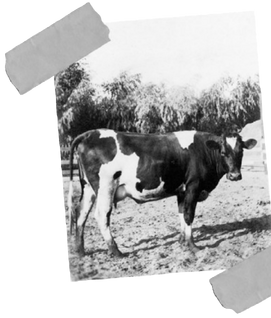
Cow disguise.
Next is a letter addressed to "Genius"; someone is gathering information on Dr. Montgomery's reptile collection. He adopted Veiled Facial Disguises and went to a V.F.D Library, where he found a librarian who, unknowingly to him, tried to give him a message. He then read The Reptile Room , which included a list of Monty's reptiles.
He then disguised himself as a cow, including a map of the area he investigated, and first investigated the Cathedral of the Alleged Virgin to see if it looked like the toad. He listened to a gravelly voice to see if it was the Dissonant Toad, but decided it wasn't when the voice muttered about how inconvenient it was to drown someone, because they got all wet. He then sniffed wildflowers, and then observed a black snake attempting to communicate with crickets that he suspects is the Mamba du Mal. He spotted a yellow-striped lizard, and overheard a child claim to see a fat toad with two wings. He approached a couple who owned the Prospero to ask if any reptiles had boarded the ship, but alarmed by a talking cow, they did not reply. He also notes that he was nearby a dairy at the time, which he did not approach due to fear of being milked.
NOTE TO FILE: Snicket describes the library at Prufrock Preparatory School, and explains that once one sings/whistles/hums the coded song, the Librarian is to salute them as if they were a soldier and say "Well, young lady, have you been good to your mother?" The proper response is "The question is, has she been good to me?" This exchange is truly saying "I have a message for you" and "I am ready to receive the message."
While visiting the school, Snicket received a note from the librarian from a couple, saying that one of O's henchmen, disguised as a cow, asked them about Monty's reptiles. They did not mention anything concerning their assistance with the Incredibly Deadly Viper , but were concerned that he might use his disguise to cause trouble at Valorous Farms Dairy.
How many associates does Count Olaf have? / What can be hidden in a book? [ ]
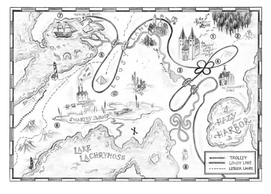
Snicket sends a letter to the cheesemakers, where he explains he is tearing pages from his green commonplace book to send to them, in hopes of keeping the passages safe. He notes, though, that "portions of this chapter have been changed or made up entirely, including this sentence."
The scraps include:
- A segment of The Bad Beginning , with a description of Olaf's henchpeople underlined.
- A segment from Chapter Six of Ivan Lachrymose: Lake Explorer, which explains that the boring book was written specifically to hide crucial documents inside.
- A segment from Ramona Quimby, Age 8 , where she meets the V.F.D Librarian.
- Photo highlights from the In Auction, with the Esmé Squalor fanclub displaying the dead Mambu du Mal.
- A segment from I Lost Something at the Movies , which includes the sentence, " Zombies in the Snow is such a strange film, with such awkward dialogue, that one wonders if it is meant to be a piece of entertainment at all, but instead some sort of coded message."
- The passage from The Reptile Room in which Klaus reads about the Mamba du Mal.
- A passage about the Mamba du Mal written by Monty, from The Mamba du Mal: A Snake That Will Never Kill Me , mentioning that certain specimens of the snake have been trained to recite codes. He notes that the only other animal trained to do such is the common grass cricket.
- Note: while the excerpt contained in this segment says that the boy has learned the language of the crickets, the original fairy tale has him learn the language of the frogs. This could presumably be a signal, similar to Verse Fluctuation Declaration, to draw attention to crickets, which are known to send V.F.D codes.
- The excerpt from Little House in the Big Woods is also given the notation: "Found Tangled in the branches of Nevermore Tree ."
- A rhyme about bells from Edgar Allen Poe's The Bells, and a bit from The History of Lucky Smells Lumbermill describing how Sir used to use special "emerald lumber" to construct V.F.D headquarters and for a few homes, including mansions constructed by the Snicket, Quagmire and Baudelaire families.
- A segment from Carmelita Spats 's book, Me: The Completely Authorized Autobiography of the Prettiest, Smartest, Most Darling Girl in the Whole Wide World , where she goes to the library. The V.F.D librarian tries to give her a message, to which she responds, "Go away, creep."
- Part of Charlotte's Web, describing how the crickets sang of summer's ending. (Note: Monty mentioned that "Summer is" was a code to be sent by the crickets/Mamba du Mal to communicate that enemies were nearby.)
- A passage from Green Mansions describing a darkened chamber, and a second passage from The Bells.
- A passage from The Littlest Elf by Monty Kensicle, about how the little elf loves the sound of bells.
- The Bald Man with a Long Nose
- White-Faced Women
- Hook-Handed Man
- Henchperson of Indeterminate Gender
- "Assortment of people the children could not see." (7?)
- Ivan Lachrymose
- Esmé Squalor Fan Club (14) (+who took the photo?)
- "Enemies are nearby" (6?)
- An only son
- Professors (3)
- Lena Pukalie
- "a man's life" (1?)
Next is a letter from Babs to Hal , saying that the enclosed papers are to be filed under Baudelaire even though they are marked Snicket; the contest appear to be "various attempts to compose an opening sentence for a rather ruesome-sounding children's book."
Are the Baudelaire parents really dead? / Why do so many things end in fire? [ ]
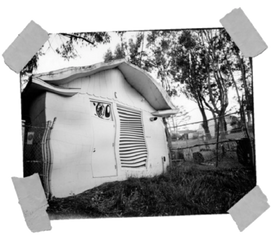
Valorous Farms Dairy.
Brett Helquist sends a letter to Snicket, apologizing for arriving too late to the scene of the fire to make any sketches that could clear his name. While he managed to draw some of the objects in the rubble- a glass bottle, portions of a grand piano, a few charred pieces of green wood and the remains of a tea set- he had to leave quickly due to the smoke. He fears how inaccurately The Daily Punctilio will report the tragedy, and mentions to Snicket that he did not believe their lies about him, "in relation to the Quagmire case or any other." He looks forward to using his illustrations to help Snicket bring truth to the public, and agrees to meet him at the Dairy. It is also revealed in the letter that Snicket believes there might be survivors of a fire. Due to the original name of the chapter, he may refer to the Baudelaire parents.
An article reveals that Valorous Farm Dairy burnt own during a thunderstorm. Detective Smith refutes rumors that a suspicious cow was seen around the area, describes the fire as an accident, and provides a sketch that was found in the rubble, presumably of the fire itself. Snicket provides a photograph of the Dairy taken during the thunderstorm by Meredith Heuer .
Is there anything a concerned citizen can do if he or she wants to help the Baudelaires? / If there's nothing out there, what was that noise? [ ]
The section opens with "Infrequently Asked Questions about V.F.D".
- How Do I Volunteer for Your Organization? While it's become difficult for members to contact potential volunteers since the schism, there is a possibility that they have unknowingly received messages. Interested recruits should keep a commonplace book and make notes on events they believe are suspicious, unfortunate, or very dull, and should keep their book in a safe place, such as underneath the bed or at a dairy.
- How does my Volunteering Begin? The recruit will hear a noise outside their home, such as the howl of a wolf, the cawing of a crow, the hissing of a snake, the chirping of a cricket, the engine of an automobile, the keys of a typewriter, the striking of a match, or the turning of a page. The recruit is to ask their parents what the noise was, an if they reply "nothing", they are to reply, "If there's nothing out there, what was that noise?" That is considered the cue that it is safe for recruitment to begin. NOTE: If the recruit has no parents, they will be contacted in a more direct manner.
- Do I have to get a tattoo? Since the schism, V.F.D has halted tattooing, as "it is not wise to permanently mark oneself with a symbol when the meaning of the symbol may change at any moment."
- How long will it be before I see my parents again? No information provided.
Snicket then writes a letter to his sister, saying that their situation is desperate enough that people have been reading about the Baudelaires. He cannot imagine who would be brave enough to help them.
Who is Lemony Snicket? / ??? [ ]
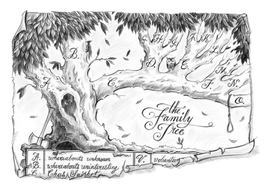
Snicket family tree.
A family tree is provided next, though the key is cut off, and only reads:
Several photographs follow (captions indicated with italics ), including:
- A man walking alone in the woods.
- A school bus with a car beside it.
- A large bridge. Great(?) Britain
- A figure in a field. I arrived too late--they'd already removed it.
- Someone near the water.
- Large buildings in a city. It turned out there was a floor above the penthouse.
- A mansion, with a car driving away.
- Someone sitting on some steps. ...did not stop weeping for nine days.
- An overgrown building. ...could not possibly have been at the same time.
- A car driving at a building. Very fast delivery.
- A blurry photograph of someone on a street.
- Some buildings on a mountain. ...could not possibly have been at the same time.
- The remains of a wall.
- A building After the schism,
- A blurry person in front of a tree
- A street I thought one of the cars was behaving strangely.
- A man standing in a field with a briefcase.
- The same man from previous photographs. If there's nothing out there,
- The final photo is too burnt to identify.
Gallery [ ]
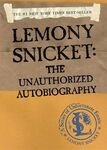
Section One [ ]
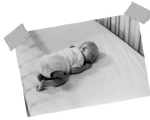
Section Two [ ]
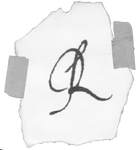
Section Three [ ]
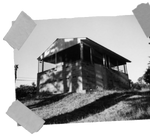
Section Four [ ]

Section Five [ ]
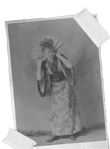
Section Six [ ]
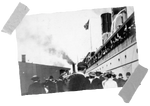
Section Seven [ ]
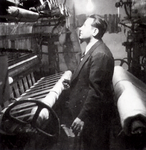
Section Eight [ ]

Section Nine [ ]
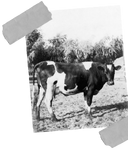
Section Ten [ ]
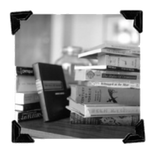
Section Eleven [ ]
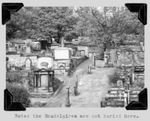
Section Thirteen [ ]
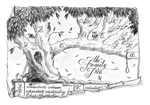
Sources [ ]
More From ForbesMeet shaun boothe: the 'unauthorized' biographer who breathes life into life stories.
Shaun Boothe with some of the subjects of his autobiographies. As a researcher I study life storytelling, so I was naturally intrigued with a show that came to my town last month called Shaun Boothe: The Unauthorized Biography Series . What I did not realize, until I watched, was how perfectly Boothe's work fits my series DIYouTube, covering people from a multitude of interests and perspectives who are changing the way society learns. Boothe's performance was equal parts entertainment, inspiration and education. Using hip hop as his lectern, visually compelling multimedia as his slides, Boothe's presentation teaches us the critical peaks and valleys of great people, often in surprising ways. According to Boothe's own bio , the Toronto native has opened for artists such Nas, Lauryn Hill and Snoop Dog. And his fascination with the lives of historic figures, women and men of color who confront oppressive systems, blended with his ability to tell stories through rap and created an opportunity to repackage history with the whole human in mind. This has led to TEDx Talks , videos watched by hundreds of thousands, and a speaking tour . In this email interview, Boothe discusses how the idea came to fruition, what common themes are woven in biographies of great people, and how digital media has changed the way we teach those stories. How did the idea for The Unauthorized Biography Series come about? When I began I was really just following in the footsteps of Nas—one of my biggest inspirations in hip hop growing up. Many years ago Nas created a song celebrating Rakim, someone who inspired him when he was young. When James Brown passed away, that Nas song inspired me to want to do the same for The Godfather of Soul. I wanted to create something that celebrated his achievements. Something that highlighted all the ways he transformed the face of music. Something that also celebrated the grit, hard work and commitment it took for him to go from growing up poor, being abandoned by his mother, to becoming a musical and social icon. How do you research your topics and build the base of knowledge? These are my heroes but by no means do I go into creating any of these bios feeling like I know all I need to know. I go into it with curiosity, a desire to learn and a mission to see and celebrate the person behind the persona. As far as research, nothing is off limits for me. Documentaries. Books. Articles. TV interviews. Wikipedia. Testimonials from friends and family. I just make sure I'm triple fact checking everything I come across. The challenge isn't really gathering the information. The challenge is synthesizing the often overwhelming amount of information and getting to the essence of what that person's life was really about. It's not just a retelling of biographical facts and accomplishments for me. What was their message? What were the universal truths and lessons their life was teaching us? What drove them? What was their purpose? It can't all be captured in a 4-6 minute song, of course. So in my live events I do get to expand on these ideas. But, ultimately, these are the questions I'm thinking about when I'm creating the bios. This is the lens through which I'm watching these documentaries or reading these books. While I was watching your show and videos, I was impressed by your ability to find turning points in their lives that are not always told in the broader narratives. Are there any themes across your subjects, commonalities about when someone finds their purpose? Yes, so many recurring themes! I'll give you my top three: Firstly, I've noticed most of them are very clear about their passion from a young age. This doesn't surprise me because, in a way, I feel that the younger we are the closer we are to our truth. The less programming we've been subjected to, fewer fears and considerations are projected onto us. That's why I think our youth is such a magical window of opportunity. It's that time in your life when society actually encourages you to listen to your heart, follow your passions and to take a chance on your dreams. As we get older the messaging switches over to practicality. And we mostly follow suit. Another common theme I've noticed was focus. These people didn't have competing dreams. They weren't spreading themselves thin. They were 100% committed to their one vision. And that focus created a sense of urgency that was palpable. Some of them went the Napoleon Hill route and 'burned their boats' to create that urgency, but many others, like James Brown as an example, really washed up ashore shipwrecked. He had no boats. No retreat. Just him, his natural gifts and no way out but forward. I believe many of us have such an overwhelming amount of options that we never get around to deciding on anything. It's hard to show up powerfully in life until you make a powerful and clear decision. That's an edge that these icons had. They weren't on the fence about life. They were leaning in. They had urgency. Thirdly, a very clear commonality is that they all went...big. And I don't mean big like 'I want a hundred millions dollars'. I mean big like 'deeply meaningful' big. To become larger than life like these icons, you really have to commit to something larger than yourself. If that vision isn't big and bold enough to inspire you, to fully light you up, then you might not have the motivation to do what's necessary. Big, bold dreams push us to be unreasonable. Good is reasonable. Greatness, however, requires a level of unreasonableness that doesn't just come naturally. So you better have a really meaningful why behind the vision. That's what pushes us through. Ali, Bob, James, Oprah, Bruce—they were up to a much bigger game in life. Yes, they all had very very successful careers, but they weren't just working for applause, they were working for a cause. To add one more thing, I think it's important to mention the common theme in these life stories that we all try to avoid most...struggle! The role of struggle on the path to greatness is universal. These icons were not only able to overcome their struggles, they were able to transmute them. They used them as fuel. What role has YouTube played in your success? Youtube was The Great Equalizer at the start of my music career. No money to hire radio pluggers? No industry champions or connections? No record label backing? No cosigns? No problem. Just create amazing content and put it out. See what happens. Yes, the barrier to entry was low, but that just pushed me to keep the level of artistry and creativity high. I knew I had to cut through the noise. YouTube is what originally launched The Unauthorized Biography Series. It all existed there at first. We'd just blast out new bios out into the ether just to see where it took us. One of the biggest 'you're on the right track' moments for me was actually when I released my Unauthorized Biography of Muhammad Ali video on YouTube. That was only the third chapter to the series at the time, right after Bob Marley. I still remember how I was casually going through my inbox messages and, boom, I see a message from none other than Muhammad Ali's real life daughter! She introduced herself and explained that she came across my music video about her father online and wanted to say I really captured what he's about and to keep up the great work. That right there is the power of YouTube. There are no limits to who it will reach, how far it will go, what doors it can open. Since then I've had people from the Marley family tweet YouTube video links of my Bob bio, Diddy tweeting his bio, Kanye West blog posts. No connections. No behind-the-scenes strings being pulled. Just put it out there and see what happens. ... as a research tool ... Youtube is a research goldmine. Some stuff you just can't find anywhere else. Rare interviews. Live performance footage. Vintage music videos. Some things you just aren't able to buy anymore. In a lot of ways you're just casting a wide net and seeing what comes back at the beginning. You don't have a clear idea of what you even want until you start diving in. YouTube definitely helps out here. Lots of jokes have been made about getting lost in random 'YouTube rabbit holes', but you can also find real gems. It can also lead you to some interesting and rewarding places. Much like how YouTube recommends related videos to the one you're watching, I often start studying one person and then end up needing to research people related to that person, or social issues related to that person or time period. We read stories all the time about the despicable and harmful elements of the site. It sounds like you find a deeper version of the site because you dig deeper. So do you think YouTube is ultimately good for humanity? I don't see YouTube as being inherently good or bad. I see it as a mirror. If we as a collective have ugliness to us, it will mirror that back. Is that a bad thing? I don't make a moral issue of it. It all serves a greater purpose in my mind. If it's showing us our ugly side that's because that's the side we need to heal. My only caveat is that I do believe parents should 100% be monitoring their kids online. There is definitely malicious and inappropriate content out there that young kids aren't ready for—and not solely on YouTube either. As an adult, however, I try to use YouTube for things that add value to my life. Do I slip and waste an hour searching something ridiculous like a 'Cardi B vs Nicki Minaj' beef? Absolutely. But I'm getting better at that. I'm way more intentional in how I use the platform these days. For me, YouTube is a digital library, an educational resource, a classroom that teaches me the things I actually care about. You even have traditional schools starting to harness the power of YouTube in the classroom now. I actually got started as a motivational speaker from teachers showing my Unauthorized Biographies in their classrooms—all streamed off Youtube. Then they would invite me in to talk about my journey as recording artist. So there's a lot of good that can come from it. We just have to set the intention to use it for good. What do you think your success says about the way we learn? It shows me that our thirst and desire to learn is still very very much alive. There just isn't enough innovation in the way we teach. At my presentations it's really a place where my inner artist meets my inner teacher. I absolutely hate the term edutainment, but that's basically what it is. I'm raising the bar in both worlds, and then combining them. It shows me that learning isn't just a mental exercise. It's an emotional experience as well. Many people come up to me after my shows saying they were brought to tears. I think we need that. We need to be touched and inspired from a deeper emotional level to create space for something new to show up. When it comes to learning emotional state matters. And I don't know anything that impacts emotional state as universally as music, visuals and innovation. That what I try my best to bring to the table.

What’s the Difference Between a Biography and an Autobiography? There are so many fascinating people in the world and throughout history. Books invite us into the life of someone worth knowing. There are two types of books that tell the story of someone’s life: biographies and autobiographies. Biographies and autobiographies are forms of nonfiction. This means that they contain real, factual information. They do not include stories or made-up scenarios. They’re meant to be informative. Both forms of writing highlight the life, work, and views of a real person. The subject of the book is usually someone who has made an impact on society and is considered famous. These people include athletes, celebrities, and business leaders. Although there are some core similarities, there are many important differences between biographies and autobiographies as well. Most notably, the level of objectivity and factual content is different. The language style and perspectives also differ. Let’s look closer at the difference between a biography and an autobiography! Difference Between a Biography and an Autobiography: BiographiesPoint of view. Someone other than the subject of the book writes biographies. It is written in the third-person, which means the author refers to the subject with their name or with ‘he’, ‘she’, or ‘they’. Since a biography is an account of a person’s life written by someone else, it is considered to be a secondary source. Point of view is the main difference between a biography and an autobiography. A biography may take several years to complete because of all the research required. This is especially true if the person has recently died, and the author must rely on other people to provide interviews. For example, Walter Isaacson, who wrote a biography on Steve Jobs, had to piece together information from the accounts of over 100 people who knew the subject. Degree of objectivityA biography tends to be more objective than an autobiography. Biography writers typically gather information through a journalistic research project. This normally includes reviewing records of events and interviews with the subject of the book or people connected to the subject. Biographies usually cover the entire life of the subject. This is especially true if the subject has died. If they are still living, the book may cover a large portion of that person’s life.  Authorized vs UnauthorizedA biography should have trustable sources so that there is nothing fictional within the book. When it comes to biographies, it’s important to note whether it is authorized or unauthorized. This has to do with the subject’s participation in the book. Did the subject allow the author to interview them? If so, the biography is considered authorized. If, on the other hand, the subject is not involved in the research of the book, it is considered an unauthorized biography. UnauthorizedWhen the book is unauthorized there is a chance it contains nonfactual information. Anyone can write a biography on a famous person so long as they don’t violate privacy rights. People like celebrities and high-profile politicians can be hard to gain access to which is why many biographies are written without cooperation from the subject. However, another reason the book may not have approval from the subject is that the author is writing a negative portrayal of the subject. They’re often gossipy and promise to “spill the beans”. Some of these end up on the New York Times Bestsellers List. They’re also controversial and can lead to legal troubles for the author. Some people view unauthorized accounts as less reliable. If the biography is about a historical figure or someone who died long ago, it wouldn’t be considered unauthorized. AuthorizedAuthorized biographies are more likely to be based on facts because the subject is providing information. Sometimes it is the subject’s idea to have the book written in the first place. In these cases, the subject may seek out a reputable author to write their story. AutobiographiesPoint of view. The subject of the book writes the autobiography, meaning the author and the subject are the same. The author writes in the first person point of view. This means they refer to the subject with ‘I’, ‘me’, and ‘my’. A first-person account gives the reader first-hand opinions, thoughts, and feelings from the subject. Knowing this will help them easily spot the difference between a biography and an autobiography. An autobiography is considered a primary source because it is a first-hand account of a person’s life in its original form without interpretation or commentary from other writers. However, this doesn’t always mean the subject/author wrote the book without help from anyone else.Because the subject is not a professional writer, a collaborator often joins to help the author tell the most factual story possible. Degree of objectivityIn an autobiography, the author’s memory is the primary source. good autobiographies leave the reader feeling like they know the author personally. this is because the book includes details that only the author knows, as well as their thoughts and feelings. , timeline . Autobiographies tend to focus on a certain period of time when a notable event occurred. The chronology is organized but may not specify exact dates. The timeline may veer off track if appropriate. For instance, the author may start from the present day and include flashbacks. They may even organize events thematically rather than chronologically. How to Define AutobiographyGlossary of Grammatical and Rhetorical Terms
An autobiography is an account of a person's life written or otherwise recorded by that person. Adjective: autobiographical . Many scholars regard the Confessions (c. 398) by Augustine of Hippo (354–430) as the first autobiography. The term fictional autobiography (or pseudoautobiography ) refers to novels that employ first-person narrators who recount the events of their lives as if they actually happened. Well-known examples include David Copperfield (1850) by Charles Dickens and Salinger's The Catcher in the Rye (1951). Some critics believe that all autobiographies are in some ways fictional. Patricia Meyer Spacks has observed that "people do make themselves up. . . . To read an autobiography is to encounter a self as an imaginative being" ( The Female Imagination , 1975). For the distinction between a memoir and an autobiographical composition, see memoir as well as the examples and observations below. From the Greek, "self" + "life" + "write" Examples of Autobiographical Prose
Examples and Observations of Autobiographical Compositions
Pronunciation: o-toe-bi-OG-ra-fee
 Legal Challenges Of Writing Unauthorized BiographiesBiographies are grouped into two categories: biographies written with the subject’s permission and cooperation, aka authorized biographies, and biographies written without the subject’s permission and cooperation, aka known as unauthorized biographies. The former tends to suggest a puffy publicity piece. The later tends to suggest a forbidden sense of controversy, like a “kiss and tell” book written by a former employee, paramour, or confidante of the biography’s subject. In the words of Kitty Kelly, the author of the controversial biography “Oprah,” the label unauthorized biography “sounds so nefarious, kind of like breaking and entering. But that’s what biography is. It does break and enter a life.” And with that sense of transgression or trespass, also comes a few significant legal risks that authors of unauthorized biographies might encounter — like a lawsuit for libel, invasion of privacy or misappropriation of the right of publicity. Some of the most notorious biographies garnered a heap of legal attention. Just read up on the news thicket around these examples: His Way: The Unauthorized Biography of Frank Sinatra, by Kitty Kelly; Tom Cruise: An Unauthorized Biography, by Andrew Morton; and Becoming Beyonce, by J. Randy Taraborrelli. Should an author lose such a lawsuit, the end results could be not only monetary damages, but an injunction preventing publication of the unauthorized biography or further distribution. If you intend to write an unauthorized biography, here are the legal challenges you might encounter and what you can do to lessen your level of risk. In general, anyone can write a biography of someone without their approval as long as it is accurate and you don’t run afoul of the following legal principles: libel, invasion of privacy, misappropriation of the right of publicity, copyright infringement or breach of confidence. We usually hear the legal term libel when a gossip rag damages a celebrity’s reputation by printing false rumors of a derogatory nature like a sexual escapade, or an ex-paramour’s heroine addiction. But libel can happen in biographies too. Libel is the publication of a defamatory statement that injures a person’s reputation (as opposed to slander, which covers the verbal form of defamation). A libelous statement must be false about some statement of fact (as opposed to an opinion). The defamed person must be living and need not be identified by name. The real person need only be identifiable to readers via the information provided. Business entities and small identifiable groups (like a lacrosse team) can be defamed too. To avoid a defamation claim, your best defenses would be truth, opinion, or parody/satire.
Thankfully, for writers and publishers, the success rate for defamation suits tends to be low. Why? Because courts tend to require the author to be negligent in publishing the defamatory statement and, if the subject of the biography is a celebrity or public figure, that the author acted with malice, i.e. they had actual knowledge the statement was false and published anyway. If the subject is not well-known, the courts tend to give them more protection against libel acts, so there is no need to show negligence or malice. In short, stick to the facts when writing an unauthorized biography. If you have support for those facts, then you’ve preserved the accuracy of the life story you’re writing about and will be on solid ground to avoid a libel cause of action. 2. The Right of PrivacyPeople have the right to be left alone. Privacy is invaded when private facts not in the public’s interest are publicly disclosed. While the truth can deflect a defamation claim, often the truth when disclosed can be the basis for an invasion of privacy claim. Usually, invasion of privacy occurs when:
The injured person must be living (unless you want to dig up the casket and that is an invasion of another kind). The disclosure of private facts must cause harm to the person’s reputation (personal or professional). Mere embarrassment usually is not enough. The injured person must have a reasonable expectation the disclosed fact was to remain private. So, if facts occurred in a public setting, then most likely there is no expectation of privacy. Often the most crucial point in a right to privacy claim is whether the disclosure was of public interest, which public figures and celebrities are. Fortunately, writers have had luck in persuading courts that the disclosure of private facts is of public interest when it illuminates the human condition. But a third-party telling someone else’s story about a child born from an incestuous relationship that was never made public and the crime never reported has been held to violate the right of privacy. The facts were newsworthy; yet revealing the identity of the victim was not a matter of public interest. For unauthorized biographies about a celebrity or public figure, rarely are they successful on an invasion of privacy claim. They are after all public people, and with that comes the sad truth that intimate and personal facts about their lives could be revealed to the public. Just remember, if the subject of your unauthorized biography is not a celebrity or public figure the the law will give greater protection to the disclosure of intimate and personal facts of their personal lives. If this is your subject, I’d suggest getting permission from the subject before you publish private or embarrassing facts about them. 3. The Right of PublicityMisappropriation of the right of publicity is using someone’s name, likeness, or identifying characteristics for advertising, merchandising, endorsements, promotional, or commercial purposes without permission. The law normally applies to the living, although some states will extend the right of publicity posthumously. And it only applies to a person who makes money from who they are (i.e. famous people). Normally, if you don’t have permission, you wouldn’t want to use someone’s name or likeness for commercial purposes. Just because you spilt a cocktail on Liza Minnelli at a party, you would not put her picture on the cover of your memoir to boost sales. Nor would you add Lee Child’s endorsement on your book if he hasn’t given one. But, if you written a biography about a famous person, permission is not required because the right of publicity yields to the First Amendment. That said, don’t claim an unauthorized biography of Madonna was authorized or you’ll be asking for trouble. Not only would this be a misappropriation of the right of publicity, but it could also lead to an unfair competition claim against you and your publisher. For an unfair competition claim to stick, the author must have intended to mislead the public into believing the subject either authorized the biography or assisted in writing it. 4. Copyright InfringementThe US Copyright Office defines copyright infringement as occurring when a “copyrighted work is reproduced, distributed, performed, publicly displayed, or made into a derivative work without the permission of the copyright owner.” ( United States Copyright Office. “Definitions.” copyright. gov . ) Usually when copyright infringement arrises in the context of an unauthorized biography, the author has used without permission excerpts of letters or papers by or oral conversations with the subject. Just remember, if you’re using the subject’s own words, whether published or unpublished, copyright law requires permission before publication unless the words are in the public domain or fair use applies. Here are two articles about fair use if you need more information: US Copyright Office and Stanford University , or see my earlier article on Permissions . 5. Breach of ConfidenceBreach of confidence is a common law tort in the United States that protects private information conveyed in confidence. This claim usually requires the information to be of a confidential nature, communicated in confidence and made public to the detriment of whoever is claiming the breach. Proving a breach of confidence requires some breach of a duty of confidentiality or a fiduciary relationship, so the relationships of the parties is important. Often a duty of confidentiality exists between employers and employees, a patients and physicians, and banks and clients. If the subject and author of the unauthorized biography entered into a contractual relationship that prohibits the disclosure of information about the subject’s life then a breach of confidence claim could be warranted. It all depends on the scope of the contract. If you intend to write an unauthorized biography, a little upfront organization and legal scouring will save you hassles in the long run. Before publication, consult a lawyer to vet the manuscript and provide advice on how to minimize risk. If you are publishing traditionally, use your publisher’s legal department; if self-publishing, hire your own publishing lawyer. A lawyer will explain what is acceptable and what is not. The last thing you want is for your creative work to meet an untimely death from these legal challenges. Photo Credit: pedrosimoes7 | Visual Hunt | CC BY Legal Disclaimer: This information is provided for educational purposes only. Consult a qualified lawyer in your jurisdiction for all legal opinions for your specific situation. Share this:Start typing and press enter to search. Biography vs. Autobiography: What's the Difference?Key DifferencesComparison chart, perspective, research requirement, authorization, biography and autobiography definitions, autobiography, who typically writes a biography, is research needed for writing a biography, what is a biography, is an autobiography always truthful, are memoirs and autobiographies the same, which is more subjective, a biography or an autobiography, can biographies be fictionalized, are autobiographies written posthumously, how does an autobiography differ from a biography, what perspective is an autobiography written from, can a biography be written without the subject's permission, can a person have both a biography and an autobiography, who is the target audience for biographies and autobiographies, are biographies always factual, do autobiographies cover an individual's entire life, how do readers benefit from biographies, what challenges do biographers face, are personal memories the main source for autobiographies, which is more intimate, a biography or an autobiography, why do people write autobiographies. 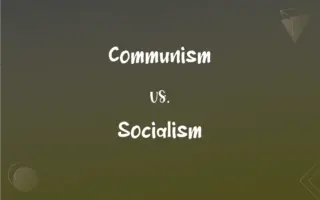 Trending Comparisons Popular Comparisons New Comparisons December 1, 2007 An Unauthorized Autobiography of ScienceJournal article explanations of how science works often differ from the actual process By Michael Shermer According to 55 percent of 350,000 people from 70 countries who participated online in Richard Wiseman’s Laugh Lab experiment (discussed in last month’s column), this is the world’s funniest joke: Two hunters are out in the woods when one of them collapses. He doesn’t seem to be breathing, and his eyes are glazed. The other guy whips out his phone and calls the emergency services. He gasps, “My friend is dead! What can I do?” The operator says, “Calm down. I can help. First, let’s make sure he’s dead.” There is a silence, then a shot is heard. Back on the phone, the guy says, “Okay, now what?” So say the data, but according to Wiseman’s personal narrative describing how the research was actually conducted (in his new book Quirkology), he believes that “we uncovered the world’s blandest joke—the gag that makes everyone smile but very few laugh out loud. But as with so many quests, the journey was far more important than the destination. Along the way we looked at what makes us laugh, how laughter can make you live longer, how humor should unite different nations, and we discovered the world’s funniest comedy animal.” Chickens notwithstanding, such first-person accounts in popular science books that include the journey and not just the destination afford readers a glimpse into how science is really carried out. On supporting science journalismIf you're enjoying this article, consider supporting our award-winning journalism by subscribing . By purchasing a subscription you are helping to ensure the future of impactful stories about the discoveries and ideas shaping our world today. Formal science writing—what I call the “narrative of explanation”—presents a neat and tidy step-by-step process of Introduction-Methods-Results-Discussion, grounded in a nonexistent “scientific method” of Observation-Hypothesis-Prediction-Experiment followed in a linear fashion. This type of science writing is like autobiography, and as the comedian Stephen Wright said, “I’m writing an unauthorized autobiography.” Any other kind is fiction. Formal science writing is like Whiggish history—the conclusion draws the explanation toward it, forcing facts and events to fall neatly into a causal chain where the final outcome is an inevitable result of a logical and inevitable sequence. Informal science writing—what I call the “narrative of practice”—presents the actual course of science as it is interwoven with periodic insights and subjective intuitions, random guesses and fortuitous findings. Science, like life, is messy and haphazard, full of quirky contingencies, unexpected bifurcations, serendipitous discoveries, unanticipated encounters and unpredictable outcomes. This chaotic process helps to explain, in part, the phenomenal success in recent decades of first-person popular accounts by scientists of how they actually did their research. The effect is especially noteworthy in works exploring the peculiarities of life. Steven Levitt and Stephen Dubner’s Freakonomics (William Morrow, 2006) illuminates the power of incentives through certain oddities. For instance, that most drug dealers live with their mothers because only the top guys make the big bucks while the rest bide their time and pay their dues, or that baby names tell us about the motives of parents. Cornell University professor Robert Frank’s The Economic Naturalist: In Search of Explanations for Everyday Enigmas (Basic, 2007) employs the principle of cost-benefit analysis to explain such idiosyncrasies as why drive-up ATM keypads have Braille dots (because it is cheaper to make the same machine for both drive-up and walk-up locations), why brown eggs are more expensive than white eggs (because there is less demand and the hens that lay them are larger and consume more food), why it is harder to find a taxi in the rain (because more people use them when it is raining, most cabbies reach their fare goals earlier in the day), and why milk is stored in rectangular cartons but soft drinks come in round cans (because it is handier to drink soda directly from a round can but easier to pour and store milk in a rectangular carton). In my October column I railed against the artificial (and odious) ranking of technical science writing over popular science writing. I suggested that the latter should be elevated to a more exalted standing of “integrative science,” where good science writing integrates data, theory and narrative into a useful and compelling work. And here I would add that exploring the minutiae of life, especially on the quirky borderlands of science, makes the scientific process more accessible to everyone. Where a narrative of explanation might read something like “the data lead me to conclude...,” a narrative of practice reads more like “Huh, that’s weird...” Weirdness trumps data in the biography of science. The Ethics of Biography and AutobiographyCite this chapter. 
84 Accesses I shall be arguing that biographers and autobiographers incur different kinds of moral risk, just as they pursue different moral opportunities. To set some contexts, I shall risk an autobiographical account of my work in ethics and literature, begun in the late 1960s. This is a preview of subscription content, log in via an institution to check access. Access this chapterSubscribe and save.
Tax calculation will be finalised at checkout Purchases are for personal use only Institutional subscriptions Unable to display preview. Download preview PDF. Similar content being viewed by others The Evocative Autoethnographic I ‘No One Is the Author of His Life’: Philosophy, Biography, and Autobiography The Return of Ethics in Literary StudiesLaurence S. Lockridge, The Ethics of Romanticism (Cambridge University Press, 1989) 22–38. Book Google Scholar John Leggett, Ross and Tom: Two American Tragedies (New York: Simon & Schuster, 1974). ‘Tom’ refers to Thomas Heggen, author of Mister Roberts. He and Lockridge never met. Google Scholar Larry Lockridge, ‘Least Likely Suicide’, Suicide and Life-Threatening Behavior 25.4 (1995) 429–36. Jerome Bruner, ‘The Autobiographical Process’, The Culture of Autobiography , ed. Robert Folkenflik (Stanford University Press, 1993) 40, 55. Download references You can also search for this author in PubMed Google Scholar Editor informationEditors and affiliations. University of Aarhus, Denmark Dominic Rainsford ( Lecturer in English ) ( Lecturer in English ) University of Wales, Aberystwyth, UK Tim Woods ( Lecturer in English and American Studies ) ( Lecturer in English and American Studies ) Copyright information© 1999 Palgrave Macmillan, a division of Macmillan Publishers Limited About this chapterLockridge, L. (1999). The Ethics of Biography and Autobiography. In: Rainsford, D., Woods, T. (eds) Critical Ethics. Palgrave Macmillan, London. https://doi.org/10.1007/978-1-349-27188-7_8 Download citationDOI : https://doi.org/10.1007/978-1-349-27188-7_8 Publisher Name : Palgrave Macmillan, London Print ISBN : 978-1-349-27190-0 Online ISBN : 978-1-349-27188-7 eBook Packages : Palgrave Literature & Performing Arts Collection Literature, Cultural and Media Studies (R0) Share this chapterAnyone you share the following link with will be able to read this content: Sorry, a shareable link is not currently available for this article. Provided by the Springer Nature SharedIt content-sharing initiative
Policies and ethics
 Sorry, there was a problem. Download the free Kindle app and start reading Kindle books instantly on your smartphone, tablet, or computer - no Kindle device required . Read instantly on your browser with Kindle for Web. Using your mobile phone camera - scan the code below and download the Kindle app.  Image Unavailable
Follow the author His Way: The Unauthorized Biography of Frank Sinatra Paperback – December 28, 2010
Editorial ReviewsAbout the author, excerpt. © reprinted by permission. all rights reserved.. On the night of December 22, 1938, two constables from Hackensack, New Jersey, headed for the Rustic Cabin in Englewood Cliffs to arrest Frank Sinatra. Armed with a warrant charging adultery, the two officers walked into the dim little roadhouse looking for the skinny singer who waited tables and sang with Harold Arden's band over the radio line to WNEW in New York. They waited until Frank finished his midnight broadcast and then sent word that they wanted to give him a Christmas present from one of his admirers. Falling for the ruse, Sinatra walked over to their table, where the criminal court officers arrested him and took him off to the courthouse. After posting five hundred dollars bail, he was released on his own recognizance. The next day a Hoboken newspaper carried a story headlined: songbird held in morals charge, but no one in Hoboken paid much attention. They were accustomed to seeing the Sinatra name in print for getting into trouble with the law. Frank's uncle Dominick, a boxer known as Champ Sieger, had been charged with malicious mischief; his uncle Gus had been arrested several times for running numbers; his other uncle, Babe, had been charged with participating in a murder and had been sent to prison. His father, Marty, was once charged with receiving stolen goods, and his mother, Dolly, was regularly in and out of courthouses for performing illegal abortions. And Frank himself had been arrested just a month before on a seduction charge. Frank's relationship with the woman who pressed criminal charges against him had begun earlier that year, when Antoinette Della Penta Francke, a pretty twenty-five-year-old who had long been separated from her husband, went to the Rustic Cabin. "He got on the platform to sing and I turned to face him," she said. "I was sucking a lemon from my Scotch, and he got mad at me. He came to the table afterwards and said, 'Look, young lady. Do you know you almost ruined my song? You suck a lemon and you make me go dry." " 'I'm going to give you a lemon in your sour face,' I joked to him. He asked me to dance and then he said, 'Can I take you out next week?' He was playing two against the middle with me and Nancy Barbato, but I didn't know it for a long time. We went together quite a few months, but then, because of his mother, he dropped me. He made me die of humiliation over something. To this day, I think about it." Toni Francke was from Lodi, New Jersey, an Italian blue-collar town of tiny clapboard houses, several of which had plaster shrines to the Blessed Virgin Mary on their front porches. Dolly Sinatra, who prized her uptown location in Hoboken, was enraged that her son had reached into such a poor area for a girlfriend. "After dating Frank awhile," Toni said, "I learned how to drive, and sometimes I'd pick him up in my car. Dolly would come out and holler at me, 'Who are you waiting for?' " 'I'm waiting for Frank,' I'd say. " 'You are after his money and you are nothing but cheap trash from Lodi,' she'd say. "Then Frank would come down. He'd feel real embarrassed. He'd put his head down and get in the car, but Dolly would start screaming at him. He used to cry in my car because she didn't want him to be a singer. She said he was a bum. 'Go to college. Go to college,' she'd yell. 'You would not go to school.' 'You want to sing.' 'You bring home bad girlfriends.' She kept it up all the time, always nagging and screaming at him. "I asked him how he could stand all that hollering. Frank said that she yelled at him all the time. Even when he went for a walk with his dad, she'd scream out the door. 'Where youse going? Don't start making him drink beer like you do, do you hear me?' Frank loved his father then. He really did. He used to say to me, 'I'd give Ma anything if she'd just leave my old man alone.' "I said to him, 'Frank, why don't you open your mouth to your mother?' " 'I don't like to say anything,' he said. 'She's my mother.' "He loved her but he didn't, if you know what I mean." Despite his mother's strenuous objections, Frank kept going to Lodi. After a few months of steady dating, Toni and her parents invited the Sinatras to dinner. "Frank told me that Dolly yelled, 'What do you mean I have to go down there?' You see, she felt she was better than us." Dolly finally relented and went with her husband and her son to the Della Penta home. Frank was looking forward to introducing his father to Toni, but he was worried about his mother kicking up a scene. He didn't have long to wait. Tension pulsated on both sides of the front door when the Sinatras arrived and rang the bell. Mr. Della Penta answered, and Dolly walked in first, followed by Marty and Frank. Toni stepped forward and said hello. "You look so nice," she said. "You have such a nice dress on." As Dolly was looking around the house, Toni took their coats and hung them up. Here's how she recalls the occasion: Frank went into the living room, sat down, and asked Toni to sit beside him. His parents sat down as well. Mrs. Della Penta said she was going into the kitchen to check on dinner. Frank popped up to help her. "That's more than he does for me," said Dolly. "I'm sorry I had a boy. I should have had a girl." "You get what God gives you," said Toni's father. "How many children do you have anyway, Mr. Della Penta?" He said that he had two daughters and one son, which seemed excessive to Dolly. "My, that's a big family, isn't it," she said. "Big?" said Toni. "It's a pleasure. At least you are never alone." "If God wanted me to have more kids, I would've had them," Dolly said. Frank walked into the room. "Did you say God, Ma? I haven't seen you go to church in quite a while." They had barely sat down to dinner when Dolly turned to Mr. Della Penta and said, "Don't you think these kids are kind of young to be going around together?" Frank looked at him and said, "I care for your daughter." "It's only puppy play," said Dolly. "Mom, I'm a twenty-two-year-old man," said Frank. "Besides, you got married young." Dolly persisted. "I don't want these kids to get married. Frankie has to go to school first." "I quit school, and you know it," said Frank. "You what?" said Toni, who thought Frank was a high-school graduate. "When did you quit?" "Now you know," said Frank. "You don't have to read it in the papers with Ma around, do you?" "I don't want Toni to go with him," said Dolly. "They're too young. She'll keep Frankie from being a big singer. I want him to be a star." Mr. Della Penta looked at Marty, who had not said a word. "Are you against this too?" Turning to Dolly, Marty said, "I've had it. She's a fine girl. Just because she has Italian grandparents, does that mean she is so bad? Your parents did not like the idea of me, but you did it anyway, so why can't Frankie do what he wants?" "Shut your goddamned mouth," said Dolly. "Yeah, if someone's not Irish, you don't want me to have anything to do with them," said Frank. Rose Della Penta left the room, and Toni's brother turned to Dolly. "Your son came after my sister," he said. "She didn't go after Frank." "I don't care," said Dolly. "I don't want them going around together anymore." Mr. Della Penta went into the kitchen to join his wife. Frank turned to his mother. "You should not have come. You're making Mr. and Mrs. Della Penta feel bad," he said. Toni got up from the table to serve dessert. "Would you care for some fruit?" "Oh, no," said Dolly. "I'm on a diet." Then she asked to go to the bathroom. Toni showed her where it was, saying, "Watch yourself coming down the steps." "Oh, I can watch myself, don't you ever worry about that, young lady," said Dolly. The dinner ended with Frank's telling his parents to go home without him because Toni would drive him back later. "You have to get your rest, Frankie," said his mother. "You can't stay out late." "Don't worry, Ma. I'll be home later." "I don't like that. What time will you be back? I worry. I don't sleep right." Marty looked at her and said, "You do okay. I'm the one who gets up at night." Dolly never called to thank the Della Pentas for the macaroni dinner, nor did she ever invite them to Hoboken to have dinner at her house on Garden Street. Frank told Toni not to take his mother's insults personally. "It's not just you," he said. "It's any girl I go with. No matter who the girl is, my mother always has something to say." In the summer of 1938, Frank asked Toni to go steady and gave her a small diamond ring. A few days later, she said, he proposed in his car, saying, "I got to make more money, but I'm going to marry you, Toni." He teased her because she wouldn't go to bed with him, saying that other girls treated their boyfriends better than she treated him. "I'm not that type," Toni recalls. "What have you got to lose?" "What do you mean? If you marry me, okay, but otherwise you can't touch me until you marry me." "Why, you made of gold or something?" After a few nights of such sparring, Toni softened, convinced she would eventually get a divorce and marry Frank. She said she had known him a long time and felt good about him. "Frank didn't seem like he had been to bed with anyone before," she said later. "He was kind of shy. He wasn't all that good because he was so thin. But he was very gentle with me. He did not grab me the first night. He could have but he didn't. We had gone to a big hotel outside of town with a bunch of other couples. We never slept together at my house. We always went to hotels, and Frank registered us as Mr. and Mrs. Sinatra. He sang to me in bed." Within six weeks, Toni was pregnant. When she broke the news to Frank, he did not say anything for the longest time. Then he said, "Well, I'll have to marry you." "Don't do me no favors, Frank." She said that there were no fights or arguments over her pregnancy and that Frank did not suggest an abortion. But Dolly bore down so hard on him for continuing to see Toni that the anxiety contributed to her miscarriage in her third month. "When I told Frank, he was real sweet. 'Gee, I'm sorry,' he said. 'I'll do anything to take care of you.' Later, he said he would marry me anyway. But his mother kept up her screaming about us, and after a while Frank started to get real snippy. He told me that I was standing in the way of him being a big singer and he didn't come around anymore." Toni called Frank one night at the Rustic Cabin. Nancy Barbato answered the phone and announced, "He's my boyfriend and I want to know why you want to talk to him." Toni was so angry that she jumped into her car and drove to the Rustic Cabin. Frank saw her walk in and quickly got off the bandstand and walked the other way. She grabbed him. "I told him that I was going to make such a scene in that place that he would probably get fired. Then Nancy Barbato tried to grab me to help him, but I screamed at her. 'Get your hands off me.' " 'What is this? Another whore?' Nancy asked. " 'Get away from me or I'll hit you,' I yelled. Then I tore her dress. Frank had been standing there without saying a word. Finally he spoke up. " 'Is that necessary?' he said. " 'If you didn't want to see me anymore, why didn't you let me know?' I said. " 'No,' he said. 'I want to see you.' " 'You what?' screamed Nancy. " 'Will you get the hell out of here,' Frank said to her." Taking Toni by the hand, Frank led her into the lounge. "That's where he said, 'I have to marry Nancy. Otherwise her father will kill me. She's pregnant.' " "So what?" said Toni. "I was pregnant and you didn't break your neck for me." "Yeah, but my mother. . . ." "Never mind about your mother." "You were a fighter, but Nancy won't stand up to her." Toni stormed out of the Rustic Cabin and drove home, wondering how she would ever tell her friends in Lodi that Frank wasn't going to marry her. Determined to punish him for publicly embarrassing her, she swore out a warrant for his arrest on a morals charge, stating that on November second and ninth, 1938, Frank Sinatra, "being then and there a single man over the age of eighteen years, under the promise of marriage, did then and there have sexual intercourse with the said complainant who was then and there a single female of good repute for chastity whereby she became pregnant." Frank's first arrest was on November 27, 1938. He was taken to the Bergen County jail and held for sixteen hours. The news made the papers, and Dolly called Toni Francke in tears. "If you cared for him, you would not have done this," she said. "Frank was going out with Nancy the whole time he was going with me," said Toni. "Not that I know of," said Dolly. That was a lie. "He made a fool out of me." "Please get him out of jail." "I'll get him out when I'm good and ready," said Toni, slamming the receiver down. Dolly called back begging for her son's release and even offered Toni money, but she got nowhere. In desperation, Dolly sent Marty to Lodi to talk to Toni's family. "Marty came to my father's house, and he was shaking," she said. "He walked real slow and quiet, like he was a beaten man. Dolly made that man so low. He said, 'Frank should respect his mother but when he doesn't, she takes it out on me.' You never embarrass an Italian man and make him low like that. As soon as I saw him I felt bad. He looked like a hobo at the door begging for something to eat. He didn't even ask for help right away, but his face said it all. He was stunned when I let him in. He thought I was going to swear at him. My father came out and said, 'You look bad. You want a shot of liquor?" " 'Yeah,' said Marty. 'Today I feel tired.' " Product details
About the authorKitty kelley. Among the awards that Kitty Kelley has been honored with by her professional peers are the Outstanding Author Award from the American Society of Journalists and Authors for her "courageous writing on popular culture," the Philip M. Stern Award for her "outstanding service to writers and the writing profession," the Medal of Merit from the Lotos Club in New York City, and the 2005 PEN Oakland Literary Censorship Award. She has also been selected as a member of Vanity Fair magazine's Hall of Fame. Her articles have appeared in the New York Times, the Washington Post, the Wall Street Journal, Newsweek, People, Ladies' Home Journal, McCall's, the Los Angeles Times, and the Chicago Tribune. Customer reviews
Customer Reviews, including Product Star Ratings help customers to learn more about the product and decide whether it is the right product for them. To calculate the overall star rating and percentage breakdown by star, we don’t use a simple average. Instead, our system considers things like how recent a review is and if the reviewer bought the item on Amazon. It also analyzed reviews to verify trustworthiness. Customers sayCustomers find the content interesting, well-documented, and easy to read. They also praise the writing quality as skilled, thorough, and careful. However, some readers feel the writing style is not interesting or a novel to read, and that the singer is not always a good person. AI-generated from the text of customer reviews Customers find the book very interesting, with excellent research and an update. They also appreciate the detailed and well-documented personal life of Sinatra. Readers also mention that the book is a fast read and provides all of the sources for documentation. " Very interesting and well-written book! Great writer, not all bio's can pull off over 700 pages and keep you turning pages...." Read more "It was easy reading , but after reading this biography, I decided I didn't like the man He was such a bully. and I have no respect for him...." Read more "...The book has great depth to it . It is mind boggling how she accumulated all the data on his life but the overtone is clearly negative...." Read more "I think the book was quite good ...." Read more Customers find the writing quality of the book very skilled, thorough, and careful. They also say the author does a good job covering the many complex sides of Frank Sinatra. Customers also mention the book is very detailed and well-documented. They say it's a complete biography of a very talented and complex man. "Very interesting and well-written book! Great writer , not all bio's can pull off over 700 pages and keep you turning pages...." Read more "...The mafia chapters are really well written and use sources such as actual mobsters along with FBI wiretaps to show how deeply entrenched Frank..." Read more "...have not rather known, I still consider him one of the greatest singers of his period ...." Read more "This book was well written and covered Frank Sinatra's life up until the mid 1980's when it was written...." Read more Customers find the writing style of the book not interesting, tiring, and repetitive. They also say it's selfish, egotistical, childish, and nasty. "... Selfish , egotistical, childish and nasty are pretty much the adjectives just about anyone who actually knew Mr. Sinatra would first use to describe..." Read more "...This one is kind of boring . How can you write a book about "Ole Blue Eyes" that is boring?...Kitty managed to do so...." Read more "...The book had an unbelievable amount of detail which did not make it a fast read " Read more "...The Voice: incomparable. The Man: not fun to read about . In fact, disgusting." Read more
Top reviews from the United StatesThere was a problem filtering reviews right now. please try again later.. Members-Only FeaturesThis page contains content or features only available to NAMT members. Please log in for full access. Not a member? Apply now! 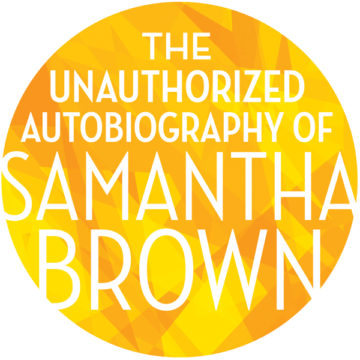 Mad Ones, The (fka The Unauthorized Autobiography Of Samantha Brown)2016 festival. Book, Lyrics and Music Kait Kerrigan and Bree Lowdermilk Director Portia Krieger Music Director Paul Staroba Cast Kevin Carolan, Corey Cott, Morgan Keene, Kecia Lewis and Ciara Renee Contact for RightsKait Kerrigan, [email protected] Number of Acts: 1Number of principals (male): 2, number of principals (female): 3, total cast size: 5, orchestra breakdown:. Piano, Guitar, Violin, Harp Genre & Style:Chamber Musical Memory Play Search Production History & Resources for Mad Ones, The (fka The Unauthorized Autobiography Of Samantha Brown): Search Set & Costume Registry When her best friend dies, Samantha Brown is paralyzed with grief and loses touch with the part of herself that was learning how to take risks. Now, she must wade through the memories of her senior year in order to take the first risk of her adult life. This smart, funny, moving show unfolds at a deliberate, confident pace like a good mystery, and we love that about it: it asks how one of the “good kids” who has it all and has done everything right can end up just as confused, lost and frightened as the rest. We feel it speaks volumes about what it is to come of age in 21st century America. - Festival Committee Development HistoryThe Unauthorized Autobiography of Samantha Brown was produced by the Aurora Theatre in Lawrenceville, GA (2014) and had a developmental production at Goodspeed’s Norma Terris Theatre (2011). It also received developmental workshops and readings at OCPAC (2009), La Jolla Playhouse (2008), Perry-Mansfield (2007), the ASCAP/Disney Workshop (2007), MTC (2006), and the Makor (2005). Festival SuccessesOff-Broadway premiere in November 2017 with Prospect Theater Company at 59E59 (NY). Concert production at Philadelphia Theatre Company (PA) in October 2017. Cast recording released in December 2019. Available for licensing through Concord Theatricals . May-June 2019 Production at the Loeb Drama Center 5 Things You Should Know
 The Unauthorized Autobiography of Samantha BrownAug 4 – 28, 2011 / The Terris Theatre - 33 N Main Street, Chester, CT 06412 view map A New Musical It is dawn. Samantha Brown is supposed to leave for college today. She sits in her car with her bags packed, but she can't turn the key in the ignition. She is filled with doubts as the defining moments of her senior year flash through her mind. Somehow Samantha has to come to terms with her parents' expectations, her first love, and a lost friendship before she can turn the key and make the first decision of her adult life. With a compelling and contemporary score, Samantha Brown is a fresh new musical that you must see. Audience Insights Guide Author's Notes Director's Vision Road Trip Guide Track the show's progress Book and Lyrics by Kait Kerrigan Brian Lowdermilk Scenic Design by Walt Spangler Costume Design by David C. Woolard Lighting Design by Jason Lyons Sound Design by Music direction by Directed by Daniel Goldstein Aug 4 – 28, 2011 The Terris Theatre 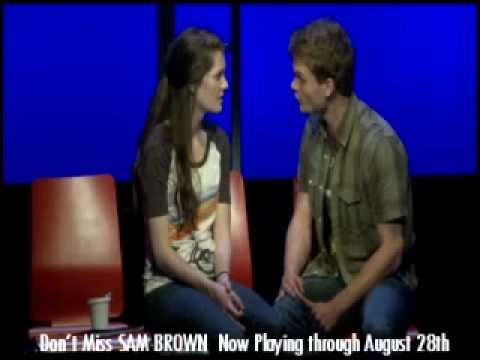 Goodspeed's Unauthorized Autobiography of Samantha Brown pt3 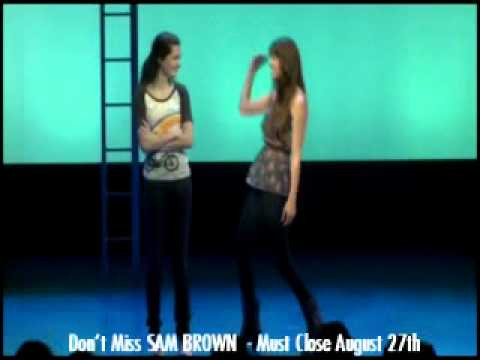 Goodspeed's Unauthorized Autobiography of Samantha Brown pt4 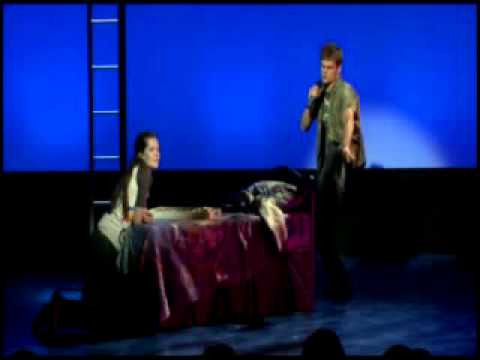 Goodspeed's Unauthorized Autobiography of Samantha Brown pt2  Goodspeed's Unauthorized Autobiography of Samantha Brown - S 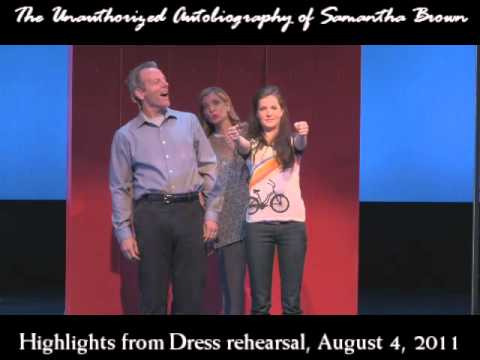 Highlights: The Unauthorized Autobiography of Samantha Brown final dress rehearsal clip.wmv   | |||||||||||||||||
COMMENTS
An unauthorized biography is a book about a person's life written without their permission or involvement in the book. From Frank Sinatra to Princess Diana, the rich and famous are often the subjects of unauthorized tell-alls—a boon for booksellers that is highly controversial. Articles. Videos. Instructors. Explore. Articles;
A: The difference between an authorized biography and an unauthorized biography is this: An authorized biography is written with the help/cooperation of the person whom the book is about and an unauthorized biography is not. In an authorized biography, the author typically holds interviews with the subject of the book, the subject's family ...
Unauthorized biography. An unauthorized biography sometimes called a kiss-and-tell, or a tell-all, is a biography written without the subject's permission or input. [1] The term is usually restricted to biographies written within the subject's lifetime or shortly after their death; as such, it is not applied to biographies of historical figures ...
Indeed, an unauthorized biography frequently paints the subject in an unfavorable light. While this assault may not have explicitly malicious intent, the point is to sell books, even if it is at the subject's expense. There are three main concerns when it comes to writing an unauthorized biography. First, there is the question of libel.
Sherman Alexie's "The Unauthorized Autobiography of Me" is indeed the perfect essay for this point in the semester. We could take any of the terminology from the Tool Kit in Smith and Watson's Reading Autobiography and apply it to Alexie's essay.. Alexie's essay begins with a scene that is very important to him: Indian boys playing basketball on a Reservation.
Lemony Snicket: The Unauthorized Autobiography is the fictional autobiography of Lemony Snicket, a pseudonym of Daniel Handler. The book was first published in May 2002, between the releases of The Hostile Hospital and The Carnivorous Carnival. Even though it is labeled "Unauthorized" for mysterious reasons, the book is in fact official. All of the pictures within the book are in black and ...
Morton's unauthorized biography is the origin of many revelations about Cruise's relationships (including the assertion that Katie Holmes had to "audition" for her relationship with him), his importance to Scientology, his authority within the church, and his sexuality. Cruise and Scientology threatened lawsuits and launched a campaign ...
Lemony Snicket: The Unauthorized Autobiography is a fictional "autobiography" of A Series of Unfortunate Events author and character Lemony Snicket. It was published on May 1, 2002. Synopsis and style. Although it is labeled "Unauthorized" for humor, the book is in fact official. Beginning ...
According to Boothe's own bio, the Toronto native has opened for artists such Nas, Lauryn Hill and Snoop Dog. And his fascination with the lives of historic figures, women and men of color who ...
Point of view is the main difference between a biography and an autobiography. A biography may take several years to complete because of all the research required. This is especially true if the person has recently died, and the author must rely on other people to provide interviews. For example, Walter Isaacson, who wrote a biography on Steve ...
"Autobiography is an unrivaled vehicle for telling the truth about other people." (attributed to Thomas Carlyle, Philip Guedalla, and others) Autobiography and Memoir - "An autobiography is the story of a life: the name implies that the writer will somehow attempt to capture all the essential elements of that life. A writer's autobiography, for ...
Some of the most notorious biographies garnered a heap of legal attention. Just read up on the news thicket around these examples: His Way: The Unauthorized Biography of Frank Sinatra, by Kitty Kelly; Tom Cruise: An Unauthorized Biography, by Andrew Morton; and Becoming Beyonce, by J. Randy Taraborrelli.
A biography provides insight into an individual's life, detailing their experiences, achievements, and challenges from the perspective of an external author. An autobiography, on the other hand, is penned by the individual themselves, offering a firsthand account of their life's journey. 12. In a biography, the subject might be anyone, from ...
This type of science writing is like autobiography, and as the comedian Stephen Wright said, "I'm writing an unauthorized autobiography." Any other kind is fiction. Formal science writing is ...
Abstract. I shall be arguing that biographers and autobiographers incur different kinds of moral risk, just as they pursue different moral opportunities. To set some contexts, I shall risk an autobiographical account of my work in ethics and literature, begun in the late 1960s. Download to read the full chapter text.
Spiritual autobiography is an account of an author's struggle or journey towards God, followed by conversion a religious conversion, often interrupted by moments of regression. The author re-frames their life as a demonstration of divine intention through encounters with the Divine. The earliest example of a spiritual autobiography is Augustine ...
A biography (BYE-og-ruh-fee) is a written account of one person's life authored by another person. A biography includes all pertinent details from the subject's life, typically arranged in a chronological order. The word biography stems from the Latin biographia, which succinctly explains the word's definition: bios = "life" + graphia ...
This unauthorized biography goes behind the iconic myth of Sinatra to expose the well-hidden side of one of the most celebrated—and elusive—public figures of our time. Celebrated journalist Kitty Kelley spent three years researching government documents (Mafia-related material, wiretaps, and secret testimony) and interviewing more than 800 ...
What Did I Do?: The Unauthorized Autobiography. Larry Rivers, Arnold Weinstein. Aaron Asher Books, 1992 - Art - 498 pages. "If modern art is the twentieth century's biography, then this autobiography of one of its pivotal figures is a unique record of our times. Larry Rivers' dazzlingly intelligent testimony takes us through the more than four ...
The Unauthorized Autobiography of Samantha Brown was produced by the Aurora Theatre in Lawrenceville, GA (2014) and had a developmental production at Goodspeed's Norma Terris Theatre (2011). It also received developmental workshops and readings at OCPAC (2009), La Jolla Playhouse (2008), Perry-Mansfield (2007), the ASCAP/Disney Workshop (2007 ...
Kitty Kelley. Katherine Kelley (born April 4, 1942) is an American journalist and author of best-selling unauthorized biographies of Jacqueline Kennedy Onassis, Elizabeth Taylor, Frank Sinatra, Nancy Reagan, the British royal family, the Bush family, and Oprah Winfrey . For the Sinatra biography, Kelley won praise for the quality of her ...
The Unauthorized Autobiography of Samantha Brown. Aug 4 - 28, 2011 / The Terris Theatre - 33 N Main Street, Chester, CT 06412 view map. A New Musical. It is dawn. Samantha Brown is supposed to leave for college today. She sits in her car with her bags packed, but she can't turn the key in the ignition.